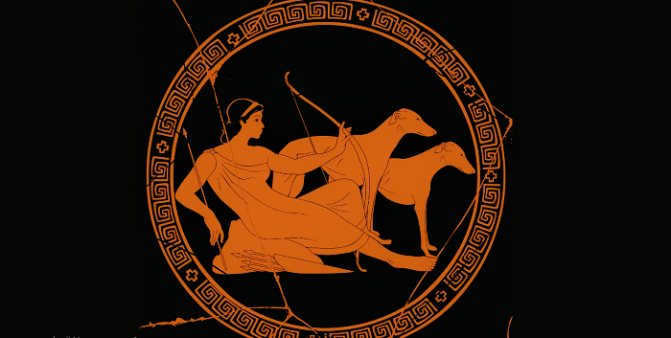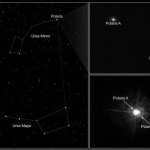
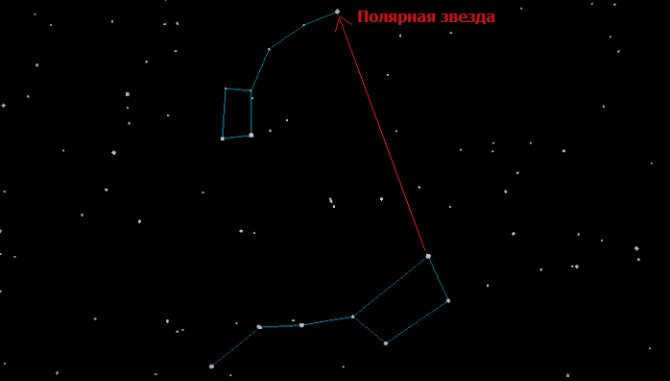
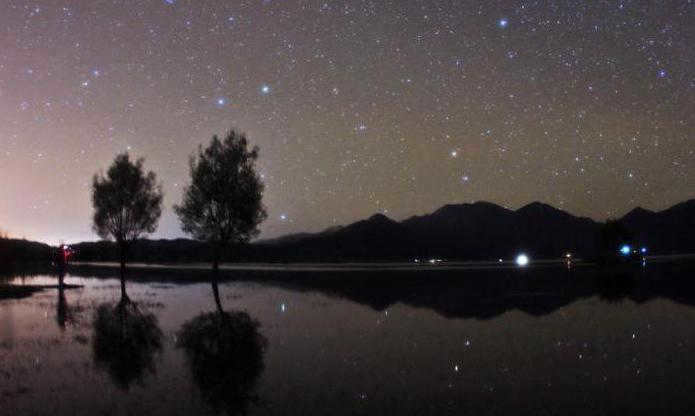
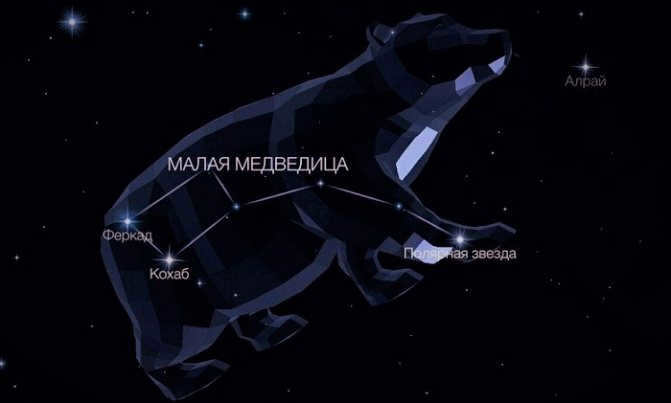
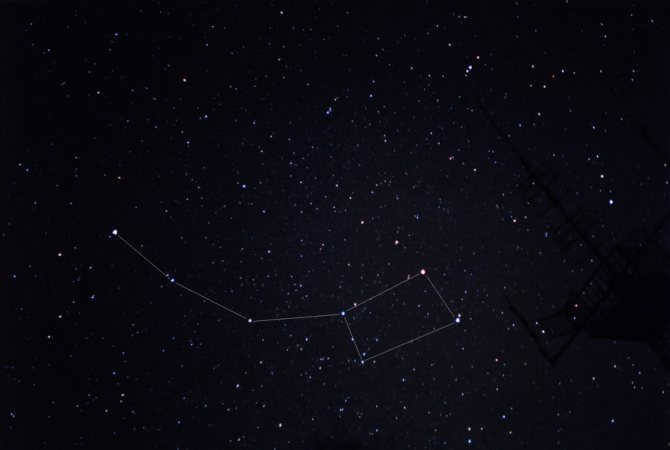
Ursa Minor is the name of a constellation situated in the northern sky, which translates from Latin as “lesser bear”.
The constellation known as the Little Bear first appeared in the sky during the second century, thanks to the work of Ptolemy. It can be easily identified by its famous asterism or its position near the north celestial pole. Polaris, also known as the North Star, can be seen at the end of the handle of the dipper.
While Ptolemy is credited with recording the constellation, the creation of it is often attributed to Thales of Miletus (who lived between 625 and 545 BC). Thales was one of the seven Greek sages and it is believed that he either discovered the constellation himself or learned about it from the Phoenicians, who used the dipper for navigation. In fact, the Greeks initially referred to the constellation as Phoenician before it became known as the Little Bear (it was also previously called the Tail of the Dog).
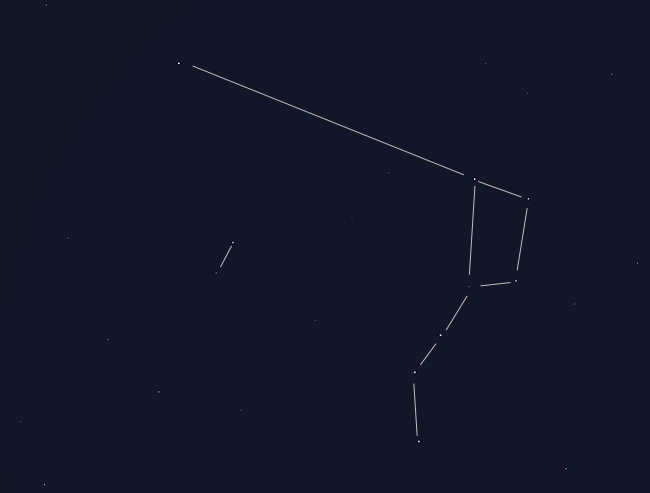
Information, location, and map
The constellation known as Ursa Minor covers an area of 256 square degrees, making it the 56th largest constellation. It can be found in the third quadrant of the northern hemisphere (NQ3) and spans latitudes from +90° to -10°. Ursa Minor is bordered by the constellations Chameleon, Cepheus, and Draco.
- The brightest star in Ursa Minor is Polaris (α UMi) with a magnitude of 2.02m
- The second brightest star is Kochab (β UMi) with a magnitude of 2.08m
- Notable meteor showers associated with Ursa Minor include the Ursids
- Other neighboring constellations include Draco, Camelopardalis, and Cepheus
Contains a celestial body with a planet and no Messier entities. The most luminous celestial body is Polaris (Alpha Minor Bear), which has an apparent visual magnitude of 1.97. There exists a meteor stream known as the Ursids. It is a component of the Big Dipper constellation, along with Veronica’s Hair, Giraffe, Dragon, Lesser Lion, Big Dipper, Lynx, Northern Crown, Hound Dogs, and Wolfsbane. Take a look at a star chart to observe a diagram of the Little Dipper constellation.
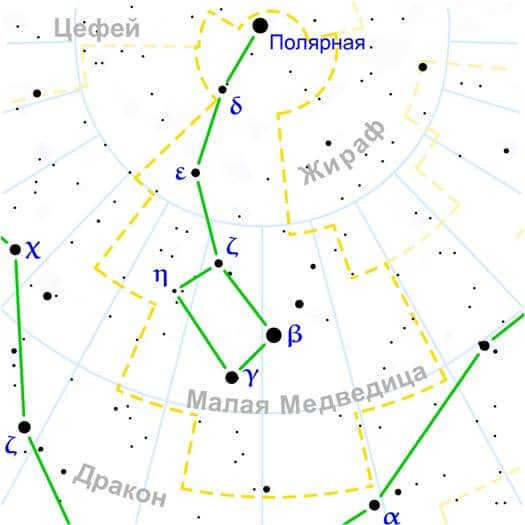
Observe the movement of the stars based on the time of day
Pay attention to how the positions of the Big Dipper and Little Dipper constellations change throughout the day. For instance, during the night in February, we can see the dipper with the handle pointing downward in the northeast, but in the morning, the constellation will shift to the northwest, and the handle will be facing upward.
Interestingly, the five stars located within the bucket constitute a distinct cluster and exhibit independent movement from the remaining two stars. Specifically, Dubhe and Benetnash are gradually drifting apart in a divergent trajectory from the other five stars. Consequently, the bucket will assume a wholly dissimilar configuration in the foreseeable future. Regrettably, this transformation will remain imperceptible to us, as the substantial alteration is projected to become discernible only after approximately one hundred thousand years.
Legend
There are two distinct tales concerning the Little Bear. The initial one revolves around Ida, a nymph who nurtured Zeus during his infancy on the island of Crete. Rhea, his native mother, had to conceal him from Cronus, his father, who was murdering all of his offspring due to a prophecy. The moment Zeus was born, she substituted him with a stone and deceived her husband. The prophecy ultimately came to fruition. The son dethroned his father and liberated his siblings, who subsequently ascended to become the gods of Olympus.
There is a different account about Arcas. He happens to be the offspring of Zeus and Callisto, a nymph who devoted herself to Artemis and shunned any contact with men. However, she couldn’t resist the advances of Zeus. When Hera discovered the betrayal, she was filled with rage and transformed Callisto into a bear. For 15 years, Callisto had to roam the forest until the moment she encountered the grown-up Arkas. Frightened, he instinctively reached for his spear. Just in the nick of time, Zeus intervened and summoned a whirlwind that carried them both up to the heavens. Callisto became the constellation known as the Big Dipper, while Arkas became the Little Dipper. Nevertheless, the story is often attributed to Volopas.
An even older myth suggests that the seven stars represent the Hesperides, who are the daughters of Atlas and the guardians of the apples in Hera’s garden.
The Little Dipper is formed by the stars Polaris, Yildun, Epsilon, Eta, Zeta, Gamma, and Beta.
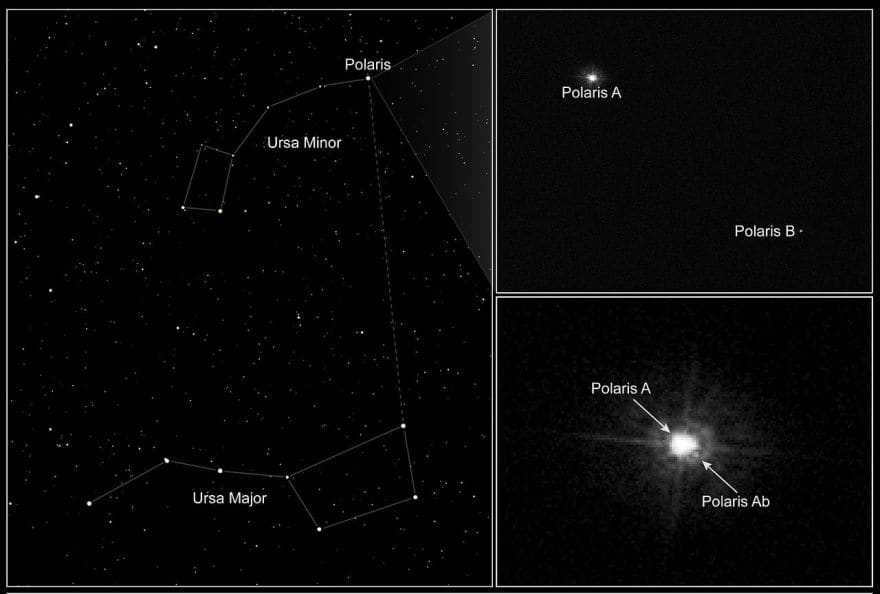
Polaris’ trinary star system.
Observing spring constellations
During the spring season, it is convenient to observe the constellations of Volopassus, the Northern Crown, and Leo. Within the constellation of Volopassus, there is a bright reddish-yellow star called Arcturus. To locate it, one can extend the line connecting the last two stars of the “bucket handle” of the Big Dipper.
Near Volopas, a small constellation of faint stars forms a wreath-like shape. This constellation is known as the Northern Crown.
Far beneath the immense constellation Leo, which is located below the prominent Big Dipper, lies a vast zodiacal formation. This formation is characterized by a sickle-shaped arrangement of stars, with a handle that culminates in a brilliant celestial body known as Regulus.
The primary stars
Delve into a close examination of the luminous stars within the constellation Little Bear, which can be observed in the northern hemisphere. Detailed descriptions, photographs, and characterizations are provided for each star.
One notable star within this constellation is Polaris, also known as Alpha of the Little Bear. Polaris is a multiple star (F7:Ib-II) with an apparent magnitude of 1.985 and a distance of 434 light-years. Since the Middle Ages, it has been recognized as the nearest bright star to the north celestial pole and is considered the brightest star in the Little Bear.
To locate Polaris, one must track the stars Dubhe and Merak, which are the two brightest stars at the conclusion of the Big Dipper asterism.
There is a bright object A in the center, accompanied by two smaller stars B and Ab, as well as two distant stars C and D.
The most luminous body is a giant (II) or supergiant (Ib) with a spectral class of F8. Its mass is six times that of the Sun. In 1780, William Herschel discovered that B is a main-sequence star (F3) and Ab is a dwarf star in a very close orbit.
Polaris belongs to the variable population of I Cepheus. In 1911, the astronomer Einar Hertzsprung from Denmark confirmed its variability. During Ptolemy’s observations, it was a star of 3rd magnitude, but now it is a star of 2nd magnitude. Due to its brightness and its proximity to the pole, it is a crucial tool in astronomical navigation.
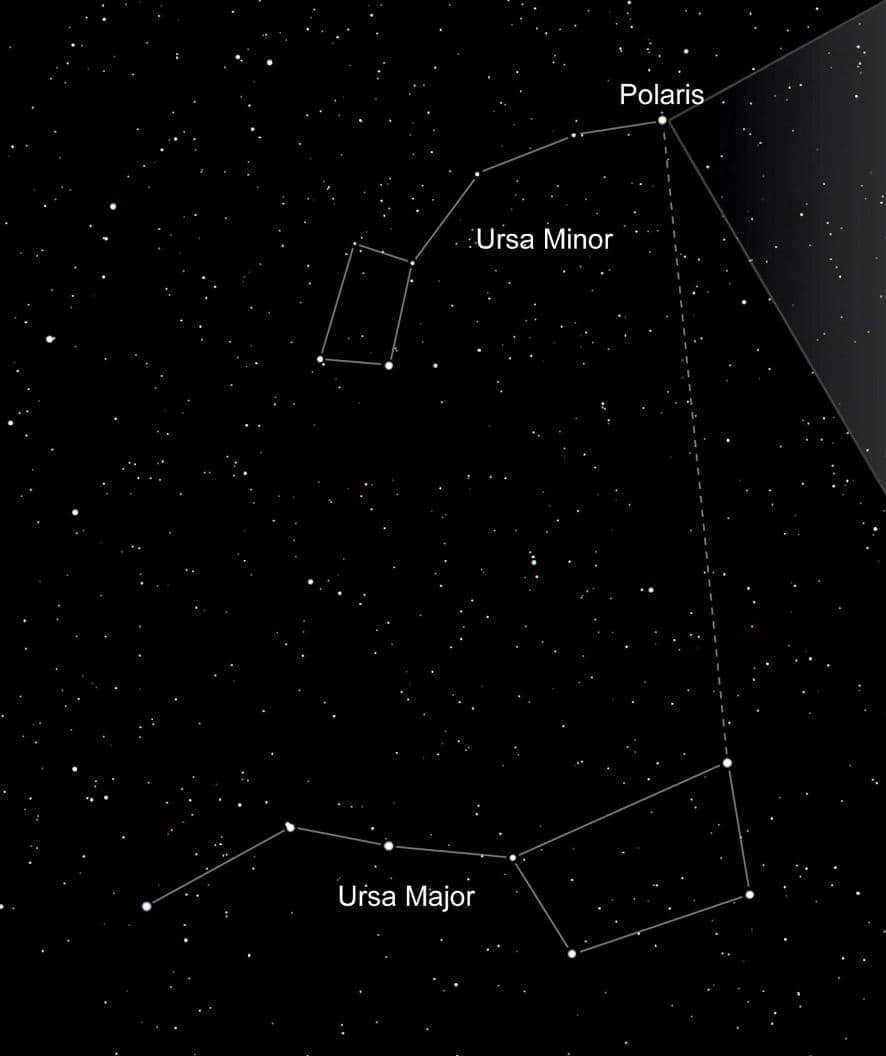
The star formation known as the Big Dipper and the Little Dipper
Cohab, also known as Beta of the Little Bear, is a massive star (K4 III) with a visual magnitude of 2.08 (the brightest star in the bowl) and it is located at a distance of 130.9 light-years. Beta and Gamma stars are often referred to as the Guardians of the Pole because they appear to orbit around the North Star, Polaris.
During the period from 1500 BC to 500 AD, these stars were considered twin stars as they were the closest and brightest stars to the north celestial pole. Cohab is 130 times brighter than the Sun and has a mass that is 2.2 times greater.
The name “Cohab” is derived from the Arabic word “al-kawkab,” meaning “star,” and it is an abbreviation of “al-kawkab al-šamāliyy,” which translates to “north star.”
Ferkad, also known as Gamma of the Little Bear, is a star of the A-type with a brightness of 3.05 and is located approximately 487 light-years away. It is classified as an A3 lab star and has a rotational velocity of 180 km/s. Ferkad is 15 times larger in radius than the Sun and shines 1,100 times brighter.
This star is unique as it has an envelope, which is a disk of gas located at its equator. This causes variations in its brightness.
The name Ferkad comes from the Arabic word for “calf”.
Yildun, also known as Delta of the Little Bear, is a white dwarf star of the main sequence with a visual brightness of 4.35. It is located approximately 183 light-years away. The traditional name Yildun translates to “star” in Turkish.
Zeta of Ursa Minor is a dwarf star (A3Vn) that is currently in the main sequence stage. It has a visual magnitude of 4.32 and is located 380 light-years away. This star is on the brink of becoming a giant, with a mass 3.4 times that of the Sun and a brightness 200 times greater. Its surface temperature is 8700 K. It is also classified as a suspected Delta Shield variable.
The Arabic translation of “aḫfa al-farqadayn” is “leading two calves.”
This particular star in Ursa Minor is a yellow-white dwarf (F5 V) that is also in the main sequence. It has a visual magnitude of 4.95 and is located 97.3 light-years away. It can be easily seen without the need for technology.
In Arabic, its name translates to “brighter than two calves.”
Epsilon of Ursa Minor is a triple star system located 347 light-years away. It consists of a G-type yellow giant star (which is an eclipsed spectroscopic double star) and an 11th magnitude star located 77 angular seconds away from the main star.
Epsilon A is also a type of variable star known as an RS Canum Venaticorum variable. The brightness of the binary system fluctuates because one object periodically eclipses the other. The overall brightness ranges from magnitude 4.19 to 4.23 with a period of 39.48 days.
Progress has demystified the constellations
Throughout history, constellations have aided us in celestial navigation. Travelers and sailors have been able to utilize the brightness and position of constellations to determine the time, find their direction of travel, and more. However, nowadays, we spend less time gathered around the campfire, gazing up at the enigmatic, star-filled sky, and we no longer create legends about well-known constellations like Ursa Major and Ursa Minor, Cassiopeia, and the Canes Venatici. Few individuals can accurately point out the Big and Little Dipper constellations. We have learned from our studies in astronomy that stars are incredibly distant, and many of the objects we observe in the night sky are actually planets similar to our own Sun.
The development of optical telescopes has led to numerous discoveries that were previously beyond the understanding of our ancestors. In fact, humans have even been able to venture to the Moon, collect samples of lunar soil, and successfully return. Science has unveiled the secrets and mysteries that shrouded the celestial bodies for centuries. Yet, we still gaze up at the sky, searching for constellations such as the snow-white Bear, the majestic Leo, or the creeping Cancer. This is why many individuals find joy in admiring the cloudless night sky, where a plethora of luminaries and their combinations can be seen.
Celestial entities
The Small Bear (PGC 54074, UGC 9749) is a dwarf elliptical galaxy with an observable brightness of 11.9 and a distance of 200,000 light-years. It serves as a companion galaxy to the Milky Way. The majority of its stars are aged and there is a scarcity of visible star formation.
Its discovery took place in 1954. Data obtained from the Hubble Space Telescope in 1999 validated that the galaxy underwent a formation phase 11 billion years ago, which lasted for 2 billion years.
If you wish to conduct a more in-depth examination of the Little Bear constellation in the northern hemisphere, you may utilize not only our photographs, but also 3D models and an online telescope. A star chart will be sufficient for your personal exploration.
| Constellations found in the summer sky | |
| During the month of June | Some of the constellations visible in the summer sky include Volopassus, Circlet, Libra, Wolf, and Little Bear |
| In the month of July | There are several constellations that can be seen in the summer sky such as Bird of Paradise, Sacristan, Northern Crown, Dragon, Hercules, Naugolnik, Serpentine, Scorpio, Snake, and Southern Triangle |
| In August | Some of the constellations visible in the summer sky include Southern Crown, Lyra, Sagittarius, Shield, and Telescope |
Greenlandic storytellers’ interpretation of the constellation’s origin story
In the remote region of Greenland, there exists a fascinating legend surrounding the constellation known as the Big Dipper. This group of stars holds great significance in the mythology and history of the area, captivating the imaginations of many. However, it is one particular story that has garnered the most attention among the Eskimos, becoming a tale passed down through generations. What makes this legend truly remarkable is the belief held by some that it may not be mere fiction, but rather a testament to the purest truth.
This tale revolves around a solitary figure named Eriulok, a proud and skilled hunter who resided in a snow-covered dwelling on the very outskirts of Greenland. Eriulok chose to live alone, shunning the company of his fellow tribesmen due to his arrogance and unwavering belief in his own superiority. Throughout the years, he would venture out to sea, returning each time with a bountiful haul. His dwelling was always well-stocked with an abundance of food and seal oil, while its walls were adorned with the finest skins of walruses, seals, and other marine creatures. Eriulok had achieved wealth and sustenance, yet lingering within him was a profound sense of loneliness.
Driven by this loneliness, the majestic hunter made numerous attempts to establish connections with his Eskimo tribesmen, yearning for companionship. However, his previous actions had left a lasting impact, leading his fellow kin to shun him. They simply did not wish to engage with someone who had wronged them so gravely in the past.
Feeling hopeless, Eriulok ventured to the Arctic Ocean and summoned the goddess Arnarkuachssak, the ruler of the depths of the sea. He shared his story of self and his lack of success. The goddess made a promise to assist, but in exchange, Eriulok had to retrieve a ladle filled with magical berries that could restore the goddess’s youth. The hunter agreed and embarked on a journey to a distant island, where he discovered a cave guarded by a bear. After a long struggle, he managed to put the wild animal to sleep and snatch the ladle filled with berries. The goddess did not deceive the hunter and bestowed upon him a life partner, while receiving the marvelous berries in return. Following all the thrilling adventures, Eriulok wedded and became the proud father of a large family, causing envy among all the neighboring inhabitants. As for the goddess, she consumed all the berries, regaining a couple of hundred centuries of youth, and in her elation, tossed the empty ladle into the sky, where it became entangled with something and remained suspended.
Asterisms: A Unique Perspective on Constellations
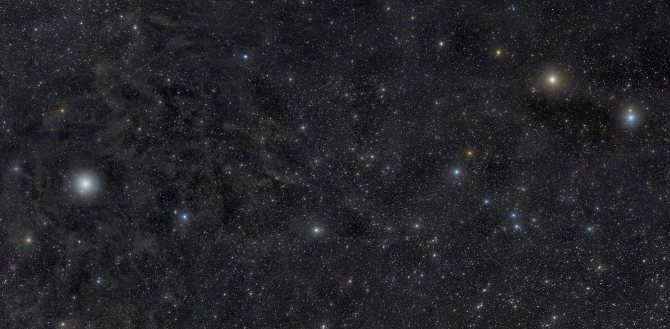
Photograph of the asterism known as the Small Bucket, captured by astrophotographer Rogelio Bernal Andreo
Within the constellation, there are two asterisms: the Small Bucket and the Guardians of the Pole. The Small Bucket is a well-known formation among modern observers. It closely resembles the nearby Big Bucket, but is not as bright. This asterism consists of several prominent stars within the celestial formation. Many people mistakenly believe that the Little Bear is only comprised of these seven objects, however, there are actually 18 additional stars in its composition.
The second asterism is much lesser-known and its name dates back to ancient times. At that time, the two stars that form this asterism, known as Ferkad and Cohab, were situated closer to the pole than Polaris.
Streams of Meteor
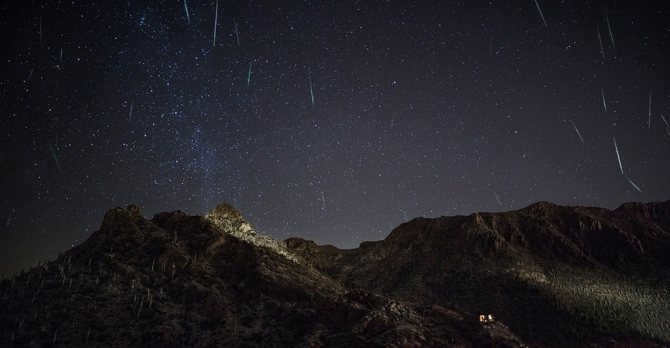
The Little Dipper functions as the radiant of Ursid, the final “starburst” of the year, which has been relatively poorly researched. Its radiant is located near the Little Ladle, and the meteor shower occurs between December 17 and 25 and is highly unpredictable. Typically, during the most active days, 10 to 20 meteors can be observed in an hour, which is not particularly interesting to the average observer. However, there are unpredictable surges of activity when the number of meteors exceeds one hundred. Such “fruitful” meteor showers occurred in 1988, 1994, 2000, 2006, and notably in 1945 and 1986. This is the northernmost stream of its kind, and it owes its origin to the short-period comet Tuttle.
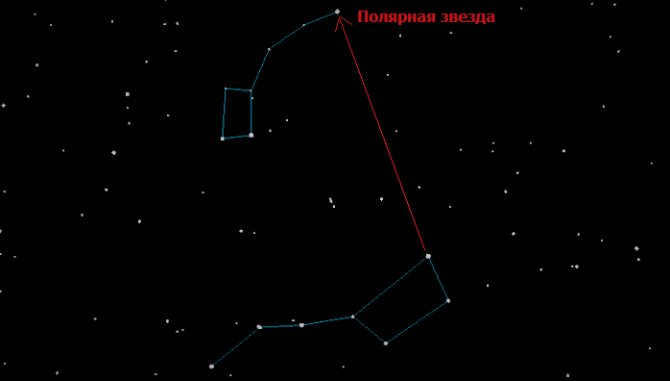
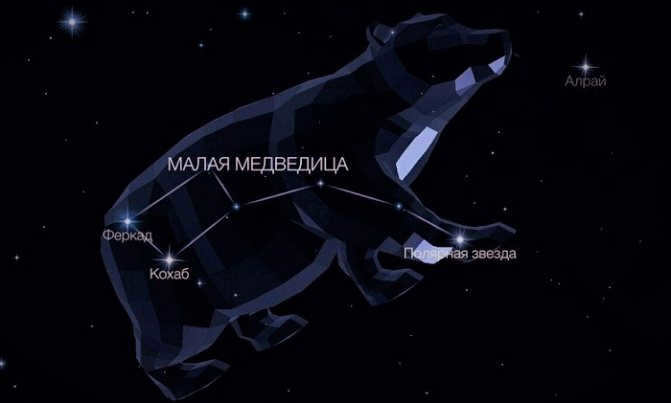
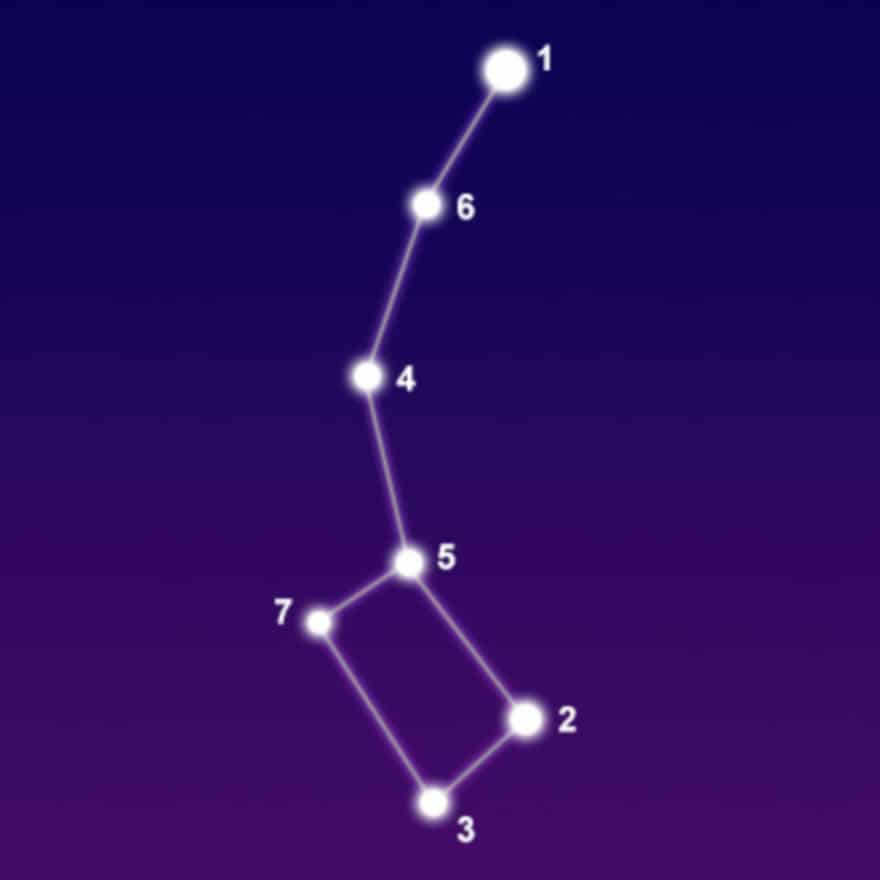
Brightest star in the Ursa Minor constellation
The most luminous celestial body in the night sky may seem like the brightest spot to us humans, but there are actually numerous objects that shine even more brilliantly. Nevertheless, Polaris outshines them all with its dazzling radiance. This star is classified as a supergiant and is accompanied by two orbiting satellites.
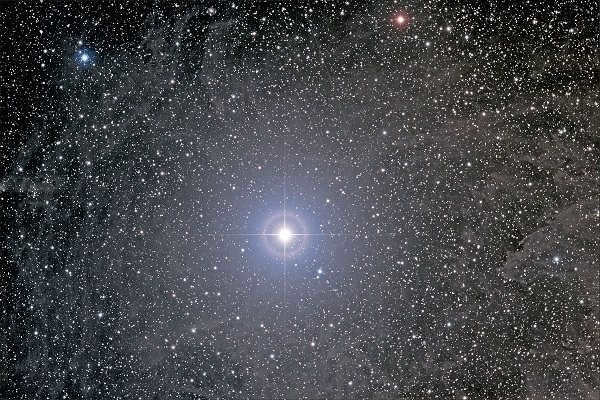
With a brightness that exceeds the capabilities of the Sun by 2000 times, the central star is truly remarkable. Recently, the discovery of a second satellite has garnered attention due to its small size. For many years, telescopes on Earth have been unable to capture images of this dwarf companion.
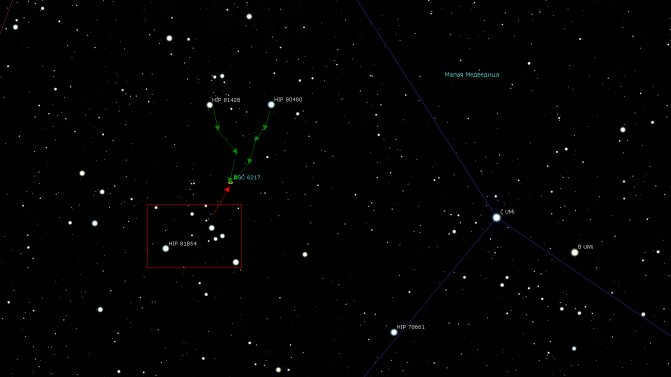
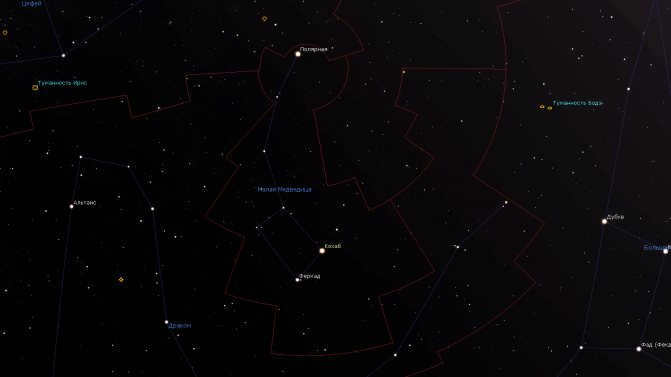
Points of Interest
Within this constellation, there are two intriguing objects:
- The Little Bear (also known as the dwarf galaxy) – a small elliptical galaxy that was discovered in 1954 by Albert Wilson. It is situated approximately 200,000 light-years away and has a visible magnitude of 11.9m. The majority of the stars within this galaxy are old, and there is minimal star formation taking place. Information obtained from the Hubble Space Telescope in 1999 confirmed that approximately 14 billion years ago, this galaxy experienced a period of star formation that lasted for 2 billion years.
- Culvera (1RXS J141256.0+792204) is a neutron star that was identified in 2007 by scientists from Pennsylvania State University (USA) and McGill University in Canada. The discovery of this star was made through the detection of X-ray emissions. It is worth noting that Culvera is one of the seven isolated neutron stars that were previously discovered, collectively known as the Magnificent Seven. The name “Culvera” was inspired by one of the characters in the movie The Magnificent Seven.
Names of the stars in the Ursa Minor constellation
The Ursa Minor constellation consists of multiple components. While they may not be as bright as their counterparts in the Ursa Major constellation, they are still easily visible on a cloudless night.
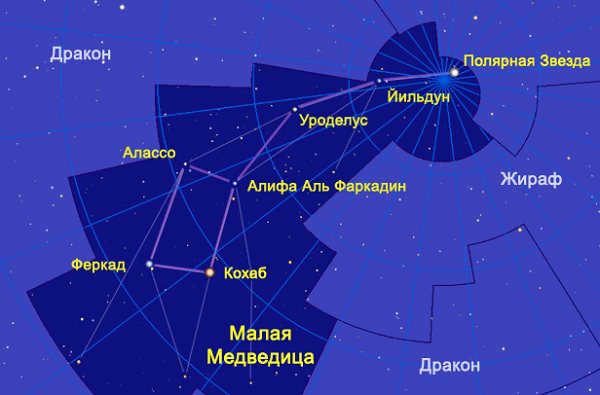
There are four stars in the constellation that have their own names, while the rest are named after letters of the Greek alphabet:
- Alpha, also known as Polaris, is the first star in the constellation and the brightest one in the night sky.
- Beta, also called Cohab, is the second brightest star in the star cluster. It is an orange giant and has a companion.
- Gamma is known as Fercadus. The combination of Beta and Gamma in the constellation means “two calves” in Arabic.
- Delta, Epsilon, Zita, and Ita do not have any specific names.
All of these stars are located more than 400 light years away from Earth.
The stars that make up the constellation of the Little Bear
An interesting aspect to note is that the primary celestial object in this region is known as Polaris. It holds the position of Alpha in the constellation and is actually part of a multiple star system. Polaris is not only the most luminous star in this area but also in the entire northern hemisphere of the sky.
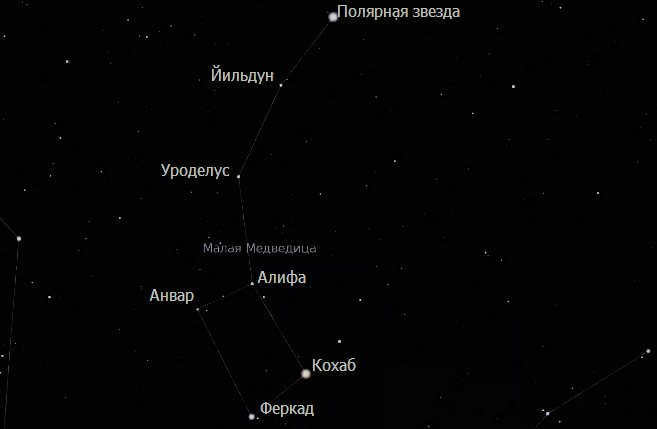
Stars of the Ursa Minor
When it comes to Beta, it is depicted as Cohab, an orange giant. Gamma, on the other hand, is a white giant known as Fercadus. Interestingly, these two celestial bodies have long been regarded as twins and even have a nickname – “Guardians of the Pole.” This name is derived from the fact that they appear to revolve around the Alpha constellation. Delta, also known as Yildun, and Zeta are white dwarf stars in the main sequence. However, Zeta is gradually transitioning into a giant. This constellation also features a yellow-white dwarf star with high luminosity. Unlike the others, Epsilon is a system of stars rather than a single star.
Discovering the Little Dipper by tracing the Big Dipper
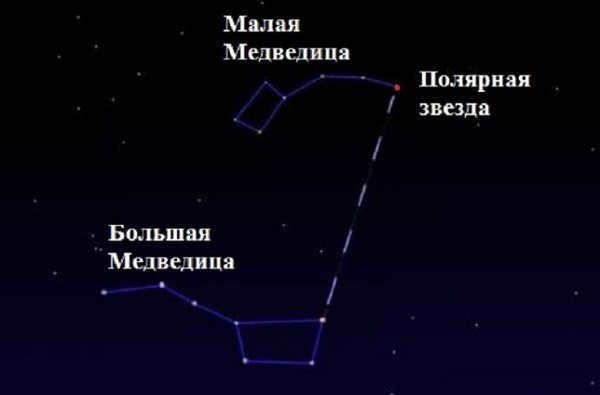
Here is a simple guide:
- Opt for a night with clear skies. It is much simpler to locate the faint lights of the Ursa Minor in an unobstructed sky. It is advisable to select a location without any artificial illumination. Such places are hard to come by in large cities, so venturing to the outskirts would be a better option.
- Locate the Ursa Major in the heavens. It is quite distinctive and not easily mistaken for anything else. Due to its relatively close proximity to Earth, the stars in this constellation shine brighter than others. It has a trapezoid shape with a long handle.
- Spot Polaris. It is situated further north than the Ursa Major and serves as the end point in the Ursa Minor.
- That’s exactly what you’re searching for. By focusing on the bucket’s handle, you can mentally shift your attention to the bucket itself, revealing the entire constellation right before your eyes.
Exciting entities
This constellation contains two fascinating entities:
- The Little Dwarf Galaxy is a small elliptical galaxy that was discovered in 1954 by Albert Wilson. It is situated approximately 200,000 light-years away and has a visible magnitude of 11.9m. The majority of its stars are old, and there is minimal star formation occurring within the galaxy. Information gathered by the Hubble Space Telescope in 1999 confirmed that 14 billion years ago, the galaxy experienced a two-billion-year period of star formation.
Locating Polaris in the Sky
One simple method for identifying Polaris is by using the Big Dipper. The prominent stars of this constellation are visible throughout the year in Russia and other countries in the northern hemisphere. They form the shape of a large ladle.
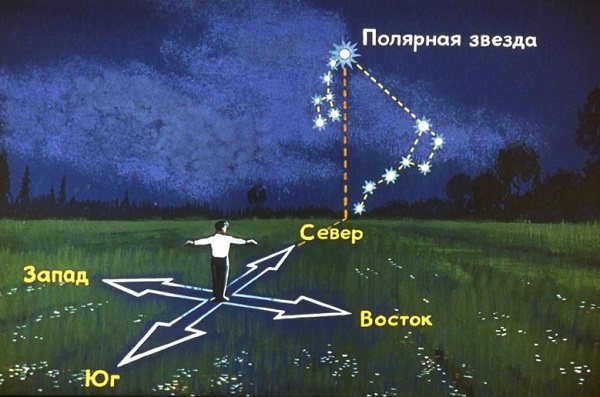
To make the image of the little bear in the sky unique, you can mentally extend a line that is five times longer than the length of this segment connecting its extreme points.
One alternative method for locating a Cepheid is by utilizing a compass. Polaris serves as a reliable guiding star for travelers, leading them towards the North Pole.
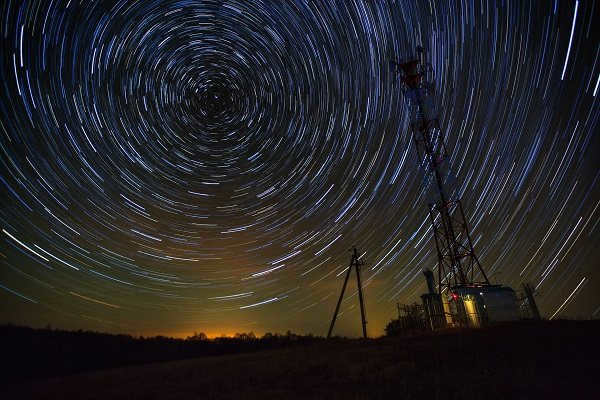
Through the act of observing the celestial body, one can discern that it remains steadfast in its position, unlike the others. As the course of the night unfolds, all of the constellations traverse the expanse of the nocturnal firmament, while it remains immobile, suspended above the North Pole.
The primary celestial bodies of the constellation Ursa Minor are.
Polaris serves as the most renowned and most brilliant star within the constellation. It consists of a system comprised of 5 entities, two of which are satellites. This star is a crucial tool for astronomers in navigation. Its brightness is highly variable, as evidenced by the contrasting observations of Ptolemy (who recorded it as a 3rd magnitude star) and modern astronomer E. Herzsprung (who classified it as a 2nd magnitude star).
Kohab, a gigantic star situated 130.9 light-years away from Earth, orbits around Polaris, the most luminous celestial body. Kohab is often referred to as the “guardian of the pole”. In Arabic, Kohab means “northern star”. It shines 130 times brighter than the Sun and boasts a mass 2.2 times greater than that of our Sun.
Ferkad is a celestial body known as the “calf” (derived from Arabic). It possesses a magnitude 15 times greater than that of the Sun and radiates a luminosity over a thousand times stronger. Situated 487 light years away from our planet, it is classified as a variable star.
Yildun, on the other hand, is a dwarf star displaying a brilliant white hue. Its name, derived from Turkish, translates to “star”.
The heartwarming tale of the Little Bear is sure to evoke deep emotions within all who encounter it. Purchasing and presenting a star as a gift is a truly memorable experience.
The constellation Ursa Minor, also known as the Little Bear, is a circumpolar constellation that can be seen in the Northern Hemisphere. It covers an area of 255.9 square degrees in the sky and contains 25 stars that can be seen without the use of a telescope. Ursa Minor is currently home to the North Pole, which is 40′ away in terms of angular distance. The Little Dipper, which is part of Ursa Minor, is a well-known constellation. It may be small in size and lack bright stars, but its location is quite significant. Ursa Minor is located near the Earth’s North Pole, making it an important reference point in astronomy for centuries. The constellation is often depicted as a small bear with a long tail, which symbolizes its connection to the Earth’s pole. The seven brightest stars in Ursa Minor form a shape resembling a bucket, similar to the asterism in the Big Dipper constellation. At the end of the handle of this bucket shape is Polaris, also known as the North Star. Finding Ursa Minor in the sky is relatively easy, especially when using the Big Dipper as a guide. By drawing a line through the two outermost stars of the Big Dipper’s bucket and measuring five times the distance between them, you can locate Polaris, which marks the beginning of the handle of the Little Dipper. The Little Dipper is not as bright as the Big Dipper, but it is still visible and distinguishable from other constellations. In the Northern Hemisphere, Ursa Minor can be observed throughout the year.
Why were bears chosen as the names for constellations?
Despite the fact that constellations do not bear any resemblance to actual bears, they were given the names of these animals. So how did this come to be? The origin of this naming convention can be traced back to the ancient Greeks, who were aware of the constellations’ close proximity to the North Pole.
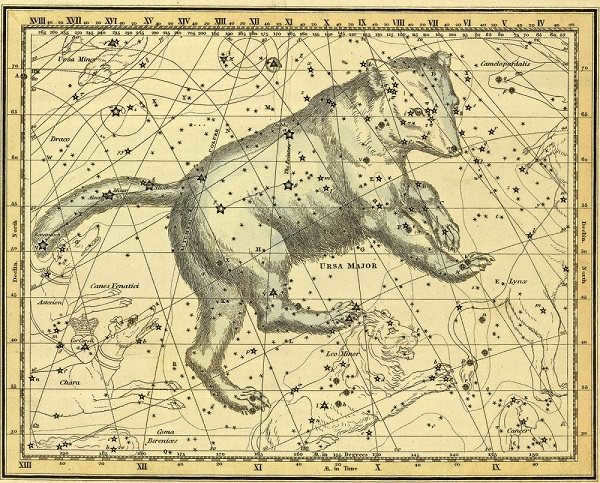
A luxury in those days, maps were scarce, and so people relied on the stars to find their way. This practice, even dating back to as early as 545 B.C., turned out to be accurate.
What creature is most commonly associated with the North Pole? The bear, undoubtedly. It’s no wonder then that two constellations near the northernmost point of the Earth are named after this majestic animal.
The Small Bear and its celestial bodies
The collection of stars known as the Small Dipper consists of seven prominent objects. Out of all the luminous entities in the Small Dipper, only the three brightest ones can be easily seen. These include Ferhad and Cohab, which create the side of the Bucket, and Polaris, which sits atop the handle of the constellation. The final two stars can be found above the tail of the Big Dipper.
The Lesser Bucket differs slightly from other constellations. Unlike the Big Dipper and most other stars, which have seasonal changes in their positions in the sky, the Small Dipper remains relatively fixed. Rather than shifting throughout the year, it maintains a consistent location as it revolves around its Alpha.
Stories and folklore surrounding the Big Dipper and the Little Dipper
The presence of constellations has been an age-old discovery. Even predating our era, they served as navigational aids for explorers. However, to the ancient Greeks, they were more than just luminous dots in the celestial sphere.
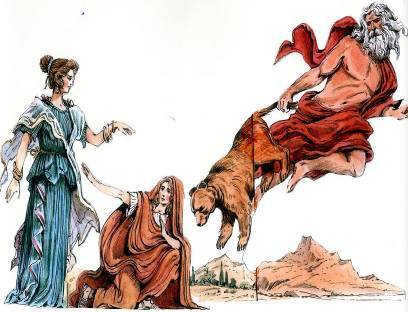
Legend has it that Zeus, the god of thunder, once had a secret paramour. The tale tells of a woman named Callisto, renowned for her extraordinary beauty, which captivated the hearts of all who beheld her.
One fateful day, the girl made a grave mistake, and the consequences were dire. She was transformed into a fearsome bear. Determined to safeguard her beauty, Zeus cast her into the heavens, but in doing so, he inadvertently stretched her tail. This is why the tail of the constellation Ursa Major is so elongated.
The girl’s loyal companion, a faithful dog, was also transformed into a bear cub and ascended to the sky alongside her. This tale was widespread among the ancient Greeks.
The vastness of the celestial sky can reveal numerous extraordinary phenomena. Even about the well-known bears, one can acquire a wealth of fascinating knowledge. How many unfamiliar constellations are hidden within the boundless expanse of space? Knowledge serves as a gateway to the enigmatic world of our Universe.
The heavens are brimming with enigmas and undiscovered wonders
Even without the aid of a telescope, a mere glimpse at the celestial luminaries during the night will unveil the immense diversity of our vast Universe.
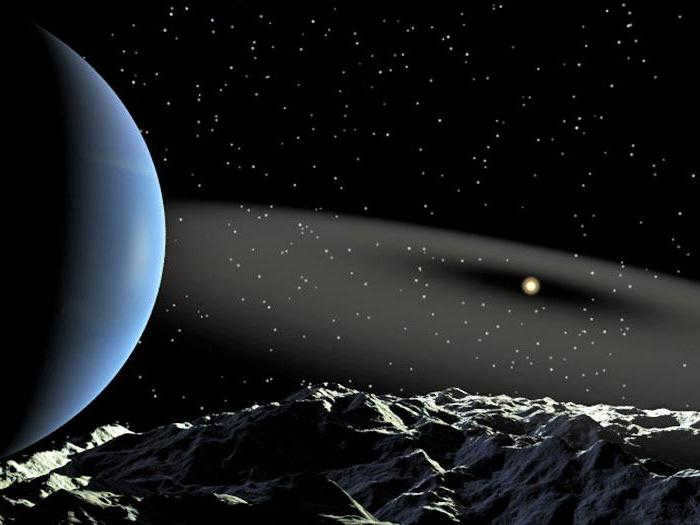
The Little Bear constellation is merely a small fragment of the vast expanse of the Universe. The boundaries and dimensions of the observable Universe have been meticulously established, revealing its immense scale of approximately 14 billion light years.
However, is this depiction of the Universe an accurate representation of reality? This question has captivated the minds of eminent scientists, who ponder, theorize, debate, and strive to comprehend the true nature of our existence. Some experts propose the notion of an infinite Universe, while others argue in favor of a Multiverse.
There is a possibility that one of these planets contains the same country and a duplicate of yourself. The boundaries of science continue to expand, revealing what was once hidden from us. It consistently proves that what may seem fantastical today will become reality tomorrow.
Notable Features
- Polaris (α UMi) – 2.02m
- Cohab (β UMi) – 2.08m
- Ursids
- Dragon
- Giraffe
- Cepheus
Origin of the star grouping
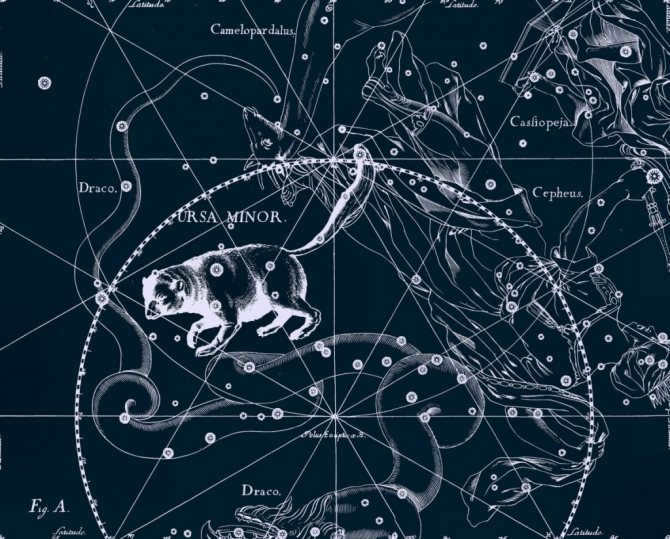
Jan Hevelius depicted The Little Bear in his constellation atlas.
Ancient astronomers discovered The Little Bear constellation thanks to Thales of Miletus, who included it in the Ptolemaic catalog. According to Greek mythology, The Little Bear represents the dog nymph Callisto, who was transformed into a bear along with her mistress. Zeus saved them from danger by placing them in the sky, where they would live forever. Many ancient civilizations were familiar with the stars that form this constellation and used them for navigation.
The top of the world
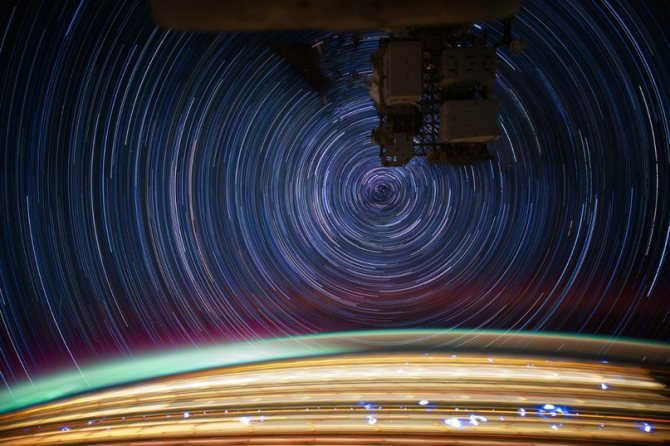
Using a long shutter speed, the photo was taken with the camera pointed at the North Star.
The North Star is a fixed point in the night sky that appears stationary to observers on Earth while all other celestial objects appear to revolve around it. It can be used as a reference point since its position does not change with the time of day. Due to the Earth’s motion, the position of the North Star does shift over time, but on a scale of centuries, it can be considered relatively constant. Currently, the closest star to the North Star is Polaris, which is located only 40 minutes away from it.
Arguably the most well-known constellation in the northern hemisphere of our planet is the Big Dipper. Composed of seven prominent stars, this asterism remains visible throughout the year in moderate latitudes. Consequently, it serves as a valuable tool for locating other constellations in the night sky and for orienting oneself on Earth.
Another constellation that many individuals may be familiar with is the Little Dipper, which is positioned not far from the Big Dipper and also remains visible year-round. Comprised of bright stars, it forms the Small Dipper asterism. However, not everyone is able to locate this constellation and its asterism. Nevertheless, it holds great significance for those residing in the northern hemisphere as it contains the renowned Polaris, which serves as a reliable indicator of northward direction.
Here we will provide a brief explanation of how to locate the Little Bear using the Big Dipper. It is quite easy to do so, starting from the stars of the Big Dipper.
To begin, you must first locate the Big Dipper in the sky. However, it is important to note that the constellation of the Big Dipper is much larger than the dipper itself. The easiest time to find the Big Dipper is during the spring, when it is almost directly overhead in the evenings. During the summer, the Big Dipper can be found in the western sky, with the dipper tilted slightly downwards.
The position of the Big Dipper during mid-summer. Image: Stellarium
During the fall, it can be found low on the horizon in the northern sky, in a nearly horizontal position…
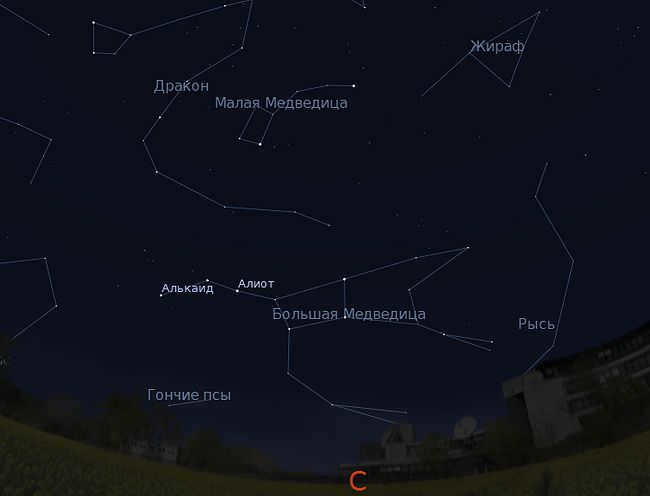
The Little Bear can be found in the sky during the fall season. Source: Stellarium
During winter, the Little Bear can be seen in the eastern part of the sky, with the Bucket constellation appearing as if it is almost standing on its handle.
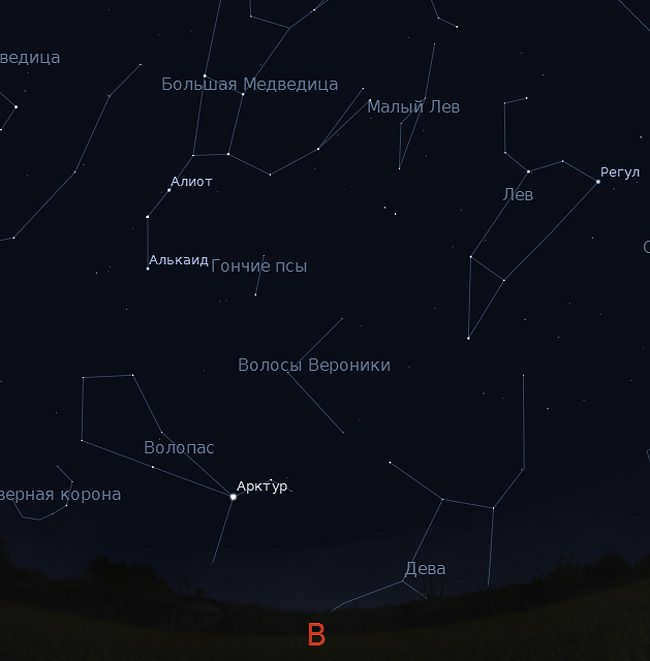
During the winter season, you can easily spot the Big Bucket in the eastern part of the sky. Illustration: Stellarium
Once you have located the Big Dipper, mentally draw a line connecting the two outermost stars, Merak and Dubhe, which form the wall of the Dipper. Now, imagine extending this line by five times the distance between Merak and Dubhe. This extended line will lead you to a star that shines just as brightly as the stars in the bucket. This particular star happens to be the brightest one in the constellation of the Little Dipper.
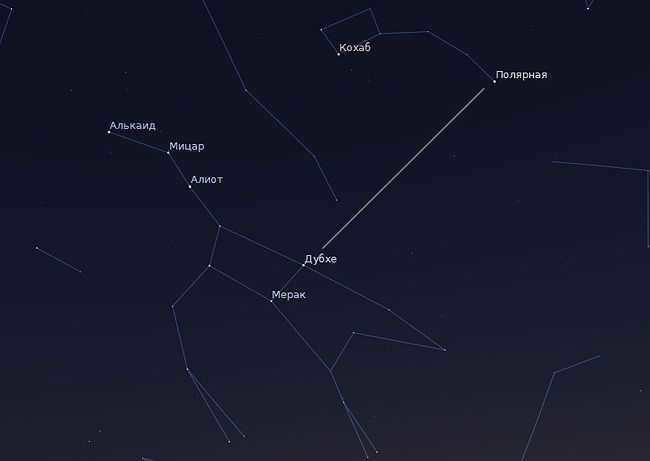

In order to locate the Little Dipper by the Big Dipper during the spring season, you can follow a few simple steps. First, look for the line formed by the stars Merak and Dubhe in the Big Dipper’s handle. This line will point you towards Polaris, also known as the North Star. Once you have located Polaris, you can then find the other two brightest stars in the Little Dipper, named Cohab and Ferkad. These stars will be positioned above the handle of the Big Dipper. By following these instructions, you will be able to easily identify and locate the Little Dipper in relation to the Big Dipper. Figure: Stellarium
The tip of the handle of the Small Dipper is where you can find Polaris. In comparison to the stars of the Big Dipper, the stars that make up the Small Dipper are generally dimmer. This makes it challenging to locate the Little Dipper in a city with a backlit sky. The Small Dipper is approximately half the size of the Big Dipper and its handle curves in the opposite direction. Out of the seven stars that form this asterism, only three can reliably be seen in the city: Polaris in the knob and the stars Cohab and Ferkad, which form the wall of the Small Bucket. The last two stars are situated above the handle of the Big Dipper.
In the urban area, only Polaris, along with the stars of the Small Dipper’s wall, Cohab and Ferkad, are easily seen from the entire constellation of the Little Dipper. The latter two stars are positioned above the handle of the Big Dipper and are connected by a line in the illustration to ensure clarity. This specific arrangement of the Big Dipper in relation to the Little Dipper is observable during the spring season when the Big Dipper is nearly at its highest point in the sky. Illustration: Stellarium
To view the complete Little Dipper and not just its outer stars, it will likely be necessary to leave the city and escape from the light pollution. It is best to choose a dark, moonless night for optimal visibility. At that point, spotting the Little Ladle should be relatively simple. The positive aspect is that the Little Dipper does not undergo significant changes in its position in the sky, unlike other star formations. While many constellations are only visible during certain seasons or undergo drastic positional shifts depending on the time of year, such as the Big Dipper, the Little Dipper is constantly visible. The Little Dipper always remains in the same region of the sky. However, the Small Bucket does change its position, appearing in the north or south, west or east. Nevertheless, its brightest star, Polaris, remains in the same position at all times, regardless of the time of day or year. Polaris serves as the axis around which the Little Dipper and all other constellations revolve.
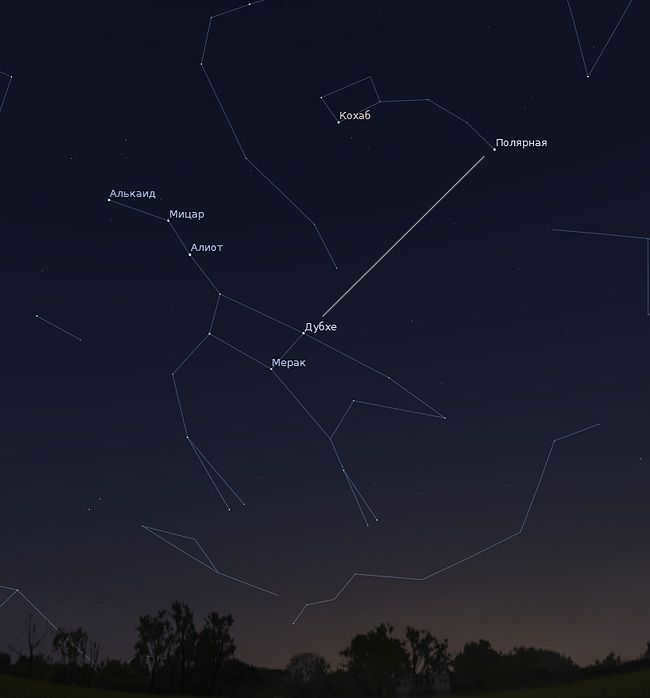
Even though the Big Dipper’s position shifts throughout the year, Polaris’ position remains constant. The technique of locating Polaris using the outermost stars of the Big Dipper is effective no matter the season. Illustration: Stellarium
This is possible because Polaris is located close to the celestial north pole. The unique feature of Polaris remaining in a fixed position makes it useful as a reference point on the ground. If you draw a line perpendicular to the horizon from Polaris, it will indicate the exact direction of north. However, it’s not just Polaris that can help with navigation. The Big Dipper can also assist in orienting oneself in the landscape. During the spring, the handle of the Big Dipper points east and the bowl points west. In other seasons, as mentioned previously, in the evenings the Big Dipper can be found in the west, north, or east, providing guidance in determining the cardinal directions.
The Little Dipper is a petite star group located in the Northern Hemisphere and consists of 25 observable stars. Within this constellation, the seven most prominent stars create a distinctive dipper shape in the celestial expanse, with Polaris serving as the handle’s finishing touch. As the Little Bear never ventures below the horizon, the little dipper remains visible during nighttime, easily discernible to the unaided eye by utilizing certain reference points.
How to locate the Little Dipper – select the appropriate setting
To ensure a successful stargazing experience, keep these suggestions in mind:
- Aim to stargaze on a night with clear skies, free of any clouds or layered cloud formations;
- Head out of urban areas, where there are no bright streetlights or illuminated windows from houses, but rather a vast dark sky that will facilitate locating the Little Dipper;
- When commencing your observation, position yourself in a way that tall trees or buildings do not obstruct your view of the horizon. Ideally, there should be no obstacles at all, ensuring a completely unobstructed horizon.
Easy Steps to Locate the Little Dipper using Polaris
Locating the Little Dipper can be a bit tricky as it is not the brightest star in the sky. However, you can easily find it by first locating the Big Dipper, which resembles a giant ladle. The Little Dipper is positioned close to the Big Dipper, making it easier to find.
Here are a few steps to help you find the Little Dipper:
- Begin by identifying the Big Dipper in the night sky. The Big Dipper is a well-known constellation and its shape resembles a ladle.
- Mentally connect the stars of the Big Dipper with a line to form the shape of a bucket with a handle.
- Pay attention to the four stars that form the bowl of the Big Dipper. The two outer stars of the bowl, known as Dubhe and Merak, can be used as reference points to locate Polaris.
- Polaris, also known as the North Star, is located close to the handle of the Little Dipper. By using Dubhe and Merak as a guide, you can easily locate Polaris.
- Draw an imaginary line connecting Merak and Dubhe. Extend the line upward and slightly to the right, making it five times longer than the distance between these stars. You will reach Polaris – the tip of the handle of the Little Dipper.
If you still can’t picture the Little Dipper even after this exploration, try this helpful suggestion.
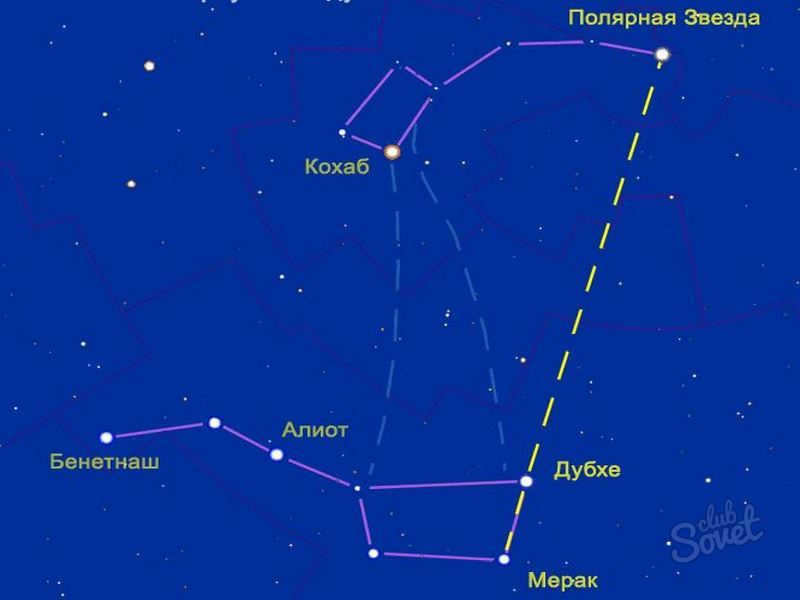
Finding the Little Dipper – an additional guide
If you have located Polaris but cannot see the Little Dipper, you can use the giant stars on the front rim of the dipper bowl, namely Kohab and Ferkad, as reference points.
- Direct your attention to the left side of Polaris and observe a light-colored circle surrounded by an orange halo – this is Kohab. Above Kohab, forming the upper corner of the dipper, is Ferkad. These stars revolve around Polaris and are known as the Guardians of the Pole.
- Take a closer look and you will notice two more stars that make up the inner corners of the dipper bowl. Connect them with imaginary lines and you will have a dipper shape without a handle.
- Search for two faintly glowing star dots positioned between the bowl and the North Star. Connect the remaining spaces with straight lines and a tiny ladle with a handle facing the opposite direction from the handle of the Big Dipper will appear.
While the Little Dipper can be located at any time, it is most visible in the winter sky before sunrise or during the first hour of sunset in spring.
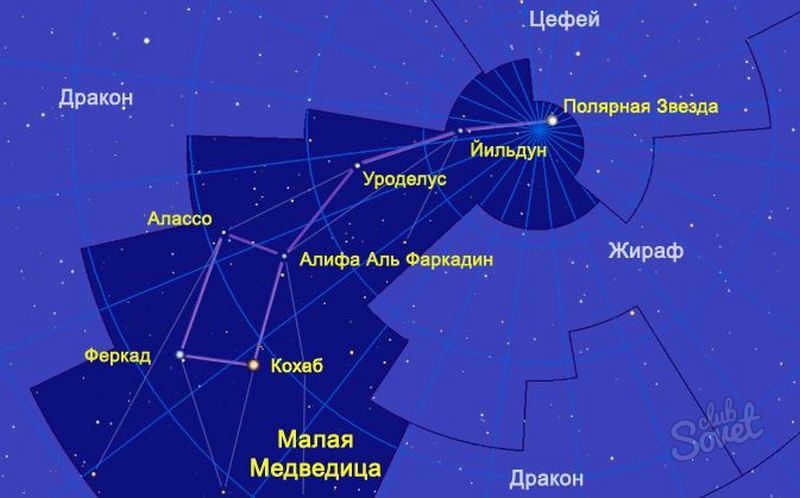
If you have the opportunity, take some time to escape the chaos of the city and find solace in nature. Look up at the night sky and marvel at the vast expanse of stars, each one representing a distant and unknown world. It’s a humbling experience to realize that the light from these stars doesn’t even reach our own planet.
It’s also a great opportunity to learn about constellations like the Little Bear, Cassiopeia, and the Dragon.
So let’s get started with our introduction to the celestial sky. Today we will be familiarizing ourselves with four constellations in the Northern sky: the Ursa Major, the Ursa Minor (featuring the famous Polaris), the Draco, and Cassiopeia. These constellations, due to their proximity to the North Pole, are visible throughout the year in the European territory of the former USSR. In other words, they can be observed in the night sky on any given day and at any time. Our first step is to locate the well-known “dipper” in the Ursa Major. Have you found it yet? If not, remember that during summer evenings, the “ladle” is located in the northwest, in the fall it can be found in the north, in winter it is in the northeast, and in spring it is directly overhead. Now, take note of the two outermost stars of this “bucket” (see figure).
If you mentally visualize a straight line connecting these two stars, the first star, which has a similar brightness to the stars in the “handle” of the Big Dipper, will be Polaris, a part of the Little Dipper constellation. Using the provided map, attempt to locate the other stars in this constellation. If you are observing from an urban area, it may be challenging to see the stars in the “little dipper” (which is an unofficial name for the Little Dipper constellation), as they are not as bright as the stars in the “big dipper”, or the Big Dipper. It would be helpful to have binoculars nearby for this task. Once you spot the Little Bear constellation, you can try to find the Cassiopeia constellation. Personally, I initially associated it with another “dipper”. It reminds me more of a coffee pot. So, focus on the second-to-last star in the “handle” of the Big Dipper. This star is accompanied by a faint star that is barely visible to the naked eye. The bright star is called Mizar, and the adjacent star is named Alcor (here is a collection of renowned Soviet telescopes for astronomy enthusiasts, made by the Novosibirsk instrument-making plant (NPZ)). It is said that, in Arabic, Mizar means horse and Alcor means rider. As someone knowledgeable in Arabic, I cannot verify this, but let’s trust the literature.
So, Mizar has been discovered. Now, trace an imaginary straight line from Mitsar through the North Star and continue for the same distance. You will likely spot a fairly bright constellation in the shape of the letter W, known as Cassiopeia (see image). It does bear a resemblance to a coffee pot, doesn’t it?
After locating Cassiopeia, let’s attempt to find the constellation Draco. As shown in the image at the top of the page, it extends between the “cups” of the Big and Little Dipper, continuing towards Cepheus, Lyra, Hercules, and Cygnus. We will discuss these constellations in more detail later, but once you have some basic experience navigating the night sky, try using the provided diagram to locate the entire Draco constellation.
Now it should be easy for you to locate the Big and Little Bears, Cassiopeia, and the Dragon constellations in the sky.
Questions:
1. During your observations, where was the Cassiopeia constellation located in the sky?
2. Where was the “dipper” of the Big Dipper located in the sky?
3. Did you manage to see Alcor with your naked eye?
There are well-known constellations in the sky that almost everyone is familiar with, such as the Little Bear constellation.
The Little Bear constellation is situated in the circumpolar area of the celestial sphere and comprises 25 celestial bodies. However, only seven of them are commonly recognized by the majority, forming a recognizable pattern known as the Small Bucket. The most renowned star of this constellation is , positioned in close proximity to the Earth’s North Pole. Alongside these relatively bright stellar bodies, there is also a diminutive elliptical galaxy present in the constellation, affectionately referred to as the Little Dwarf due to its size.
Geographical Position
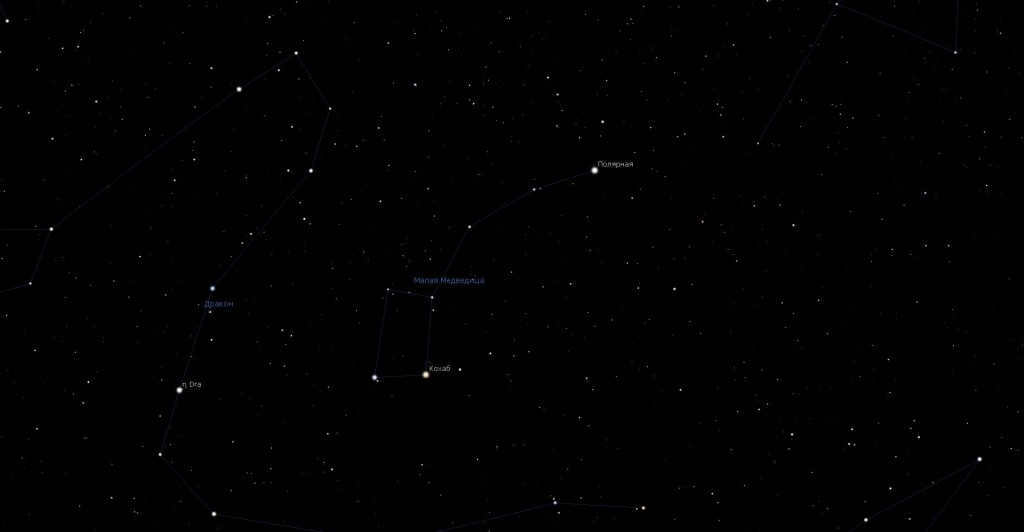
The constellation known as the Little Dwarf can be easily located in the night sky. It is situated near the Giraffe, Dragon, and Cepheus constellations. To find it, you can use Polaris, also known as the North Star, as a reference point. By drawing a line through the two outermost stars of the Big Dipper and measuring five distances between them, you can locate Polaris. From there, you can trace the “handle” of another smaller dipper, which is the Little Dipper. Although it is not as bright as the Big Dipper, it is still visible and distinguishable from other constellations in the sky. The Little Dipper can be observed year-round in the Northern Hemisphere.
The Northernmost Point on Earth
The North Pole is the northernmost point on the Earth’s surface. It is the point on the celestial sphere that appears fixed to an observer on Earth, while all other celestial objects appear to revolve around it. The North Pole can be used as a reference point, especially if there is a bright star nearby, since its position remains constant throughout the day. Despite the Earth’s motion, the North Pole can be considered relatively stationary over centuries. Currently, the star Polaris is the closest to the North Pole. It is only 40 angular minutes away from the pole in terms of celestial coordinates.
Polaris
Polaris is the name of the North Star, also known as the Pole Star or Polaris. It is the brightest star in the constellation Ursa Minor and has been used by sailors and navigators for centuries to find their way. Polaris is located almost directly above the North Pole, making it a reliable reference point for determining direction. In addition to its navigational importance, Polaris is also a binary star system, with a smaller companion star orbiting around it. The main star, Polaris A, is a supergiant star with a diameter over 40 times that of the Sun. Its brightness and position have made it a significant celestial object in many cultures and it continues to captivate stargazers and astronomers alike.
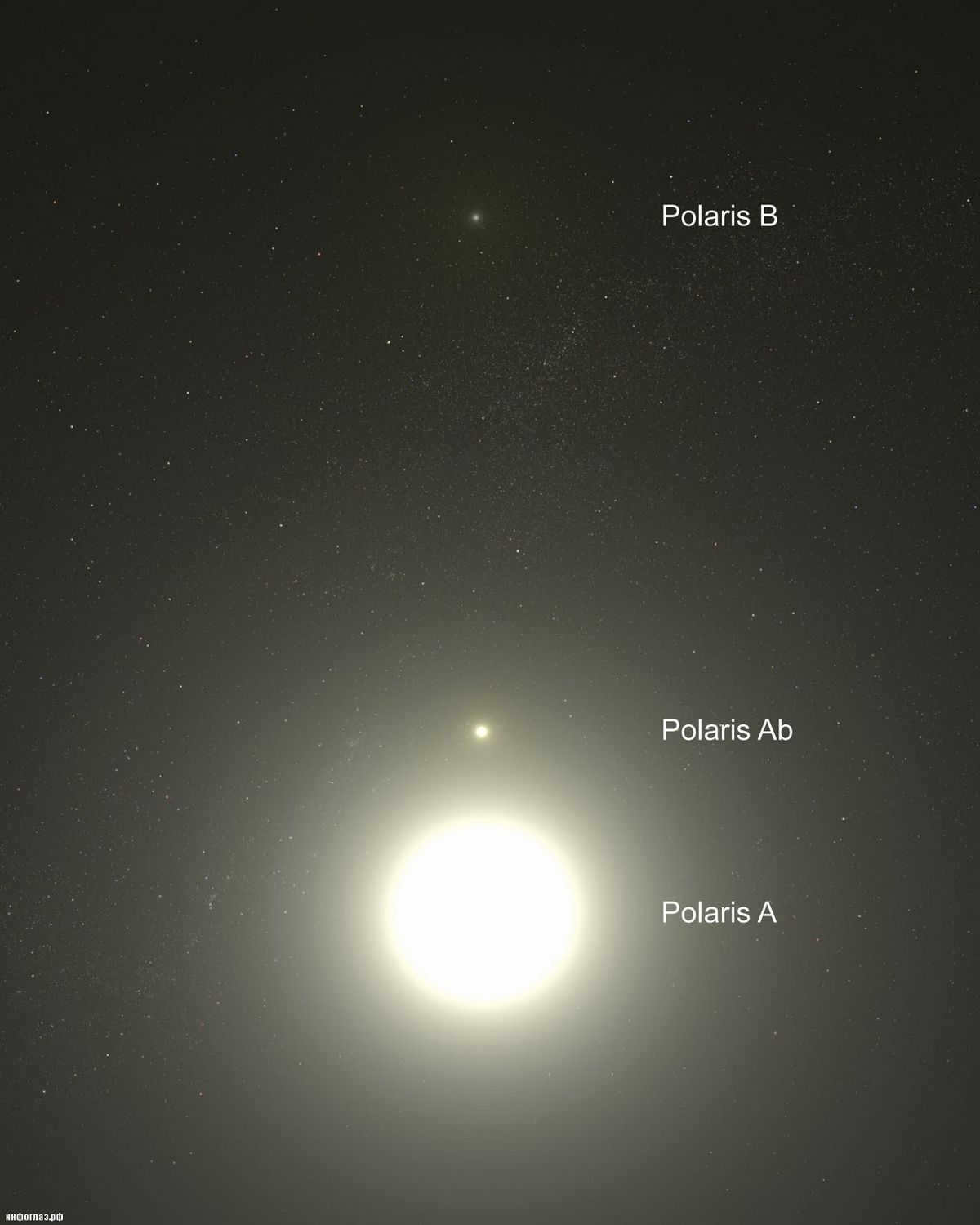
The Little Bear’s Alpha is located 434 light-years away from our planet and boasts an apparent magnitude of 1.97. However, this celestial object is not a single star but rather a trinary system consisting of three stars. The primary star, which is the largest of the trio, is 4.5 times more massive than our Sun and shines with a brightness that is two thousand times greater. The second largest star is situated at a considerable distance from the main star and can even be observed with a small telescope. It has a mass roughly equivalent to 1.39 solar masses. The third star is so closely positioned to the first star that they can only be visually distinguished with the aid of a telescope, and even then, it is quite challenging. This star is 1.25 times more massive than our Sun.
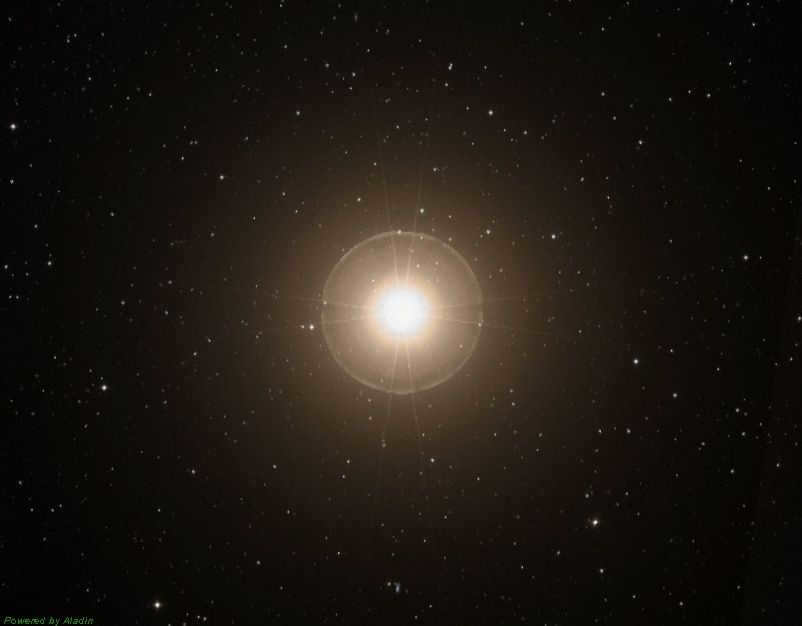
The beta star of the Little Bear, which has a visual magnitude of 2.08, is the second brightest celestial body in the constellation. Situated approximately 126 light-years away from our planet, this star is known by its Arabic name, which translates to “Star of the North”. During the prehistoric era, from around 2000 to 500 years ago, Kohab was located closest to the celestial pole and served as a crucial navigational landmark for ancient civilizations. In 2014, Korean astronomers made an exciting discovery in this double star system – a gas giant planet with a mass 6.1 times greater than Jupiter. This massive planet has an orbital period of 522.3 days.
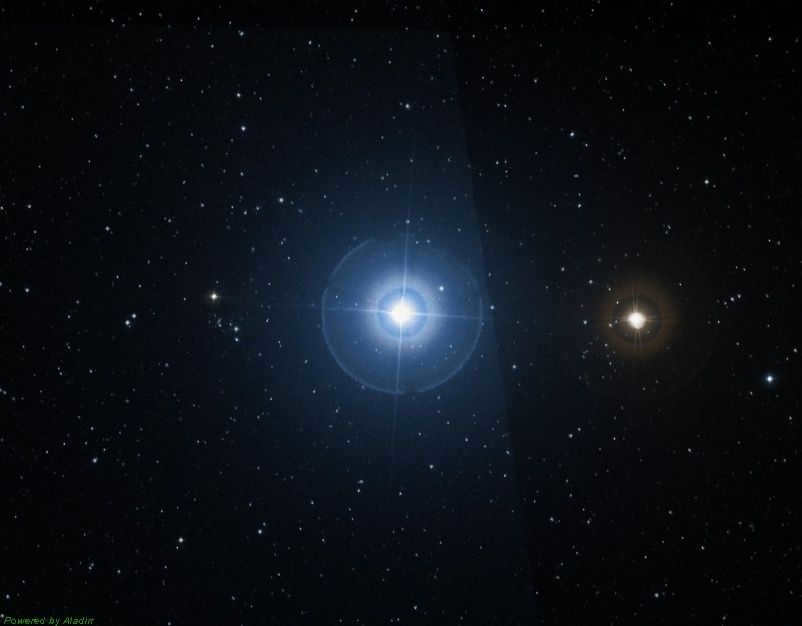
Gamma Minor is situated about 480 light-years away from our planet and exhibits an apparent magnitude that fluctuates within the range of 3.04 and 3.09. The duration of change in the brightness of this celestial object is approximately 3.43 hours. This star, which is the third most luminous entity in the constellation, is classified as a hot giant with a temperature estimated to be around 8600 K. Its luminosity surpasses that of the Sun by a factor of 1.1 thousand, and in terms of its size, it is approximately 15 times larger than our own yellow dwarf. In terms of its classification, it is categorized as a T Shield variable luminary.
Asterisms
Asterisms are groups of stars that form recognizable patterns within a constellation. They are smaller and less formal than constellations, but they can be helpful for locating specific stars or objects in the night sky. Asterisms often have cultural or historical significance and can be found in various mythologies and folklore. Some well-known asterisms include the Big Dipper, the Little Dipper, and Orion’s Belt. These patterns can be easily identified and are popular among stargazers and amateur astronomers. So next time you look up at the night sky, keep an eye out for these beautiful and fascinating asterisms.
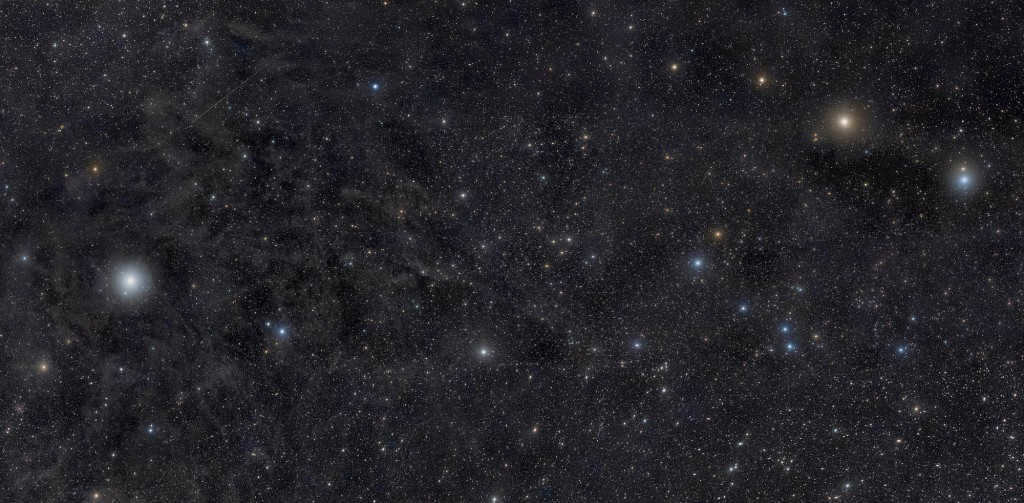
Within the sky, there are two groups of stars that make up the constellation: the Small Bucket and the Guardians of the Pole. The Small Bucket is familiar to astronomers today and bears a striking resemblance to the nearby Big Bucket, albeit with a lesser brightness. It consists of the most prominent stars in this celestial formation. Some individuals mistakenly believe that the Little Bear is solely comprised of these seven celestial objects; however, there are actually an additional 18 stars that make up its composition.
The second group of stars, known as the Guardians of the Pole, is not as widely recognized and traces its name back to ancient times. During this period, the two stars that constitute this group, Ferkad and Cohab, were positioned closer to the pole than Polaris.
Meteor showers
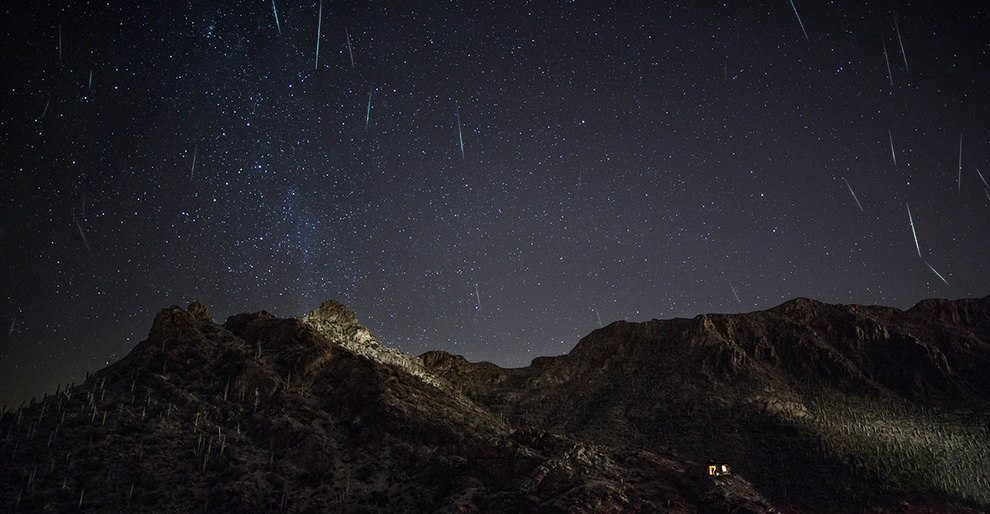
The Little Dipper acts as the source of the meteor shower, known as the last “starburst” of the year, which remains relatively unexplored. Its radiant is located near the Little Dipper constellation, and the meteor shower occurs between December 17 and 25 with highly unpredictable patterns. Typically, during the peak days, observers can see between 10 to 20 meteors per hour, which may not be particularly exciting for the average stargazer. However, there are occasional surges in activity when the number of meteors exceeds a hundred. Notable years with such “fruitful” meteor showers include 1988, 1994, 2000, 2006, and especially 1945 and 1986. This meteor shower is the northernmost of its kind and owes its origin to the short-period comet Tuttle.
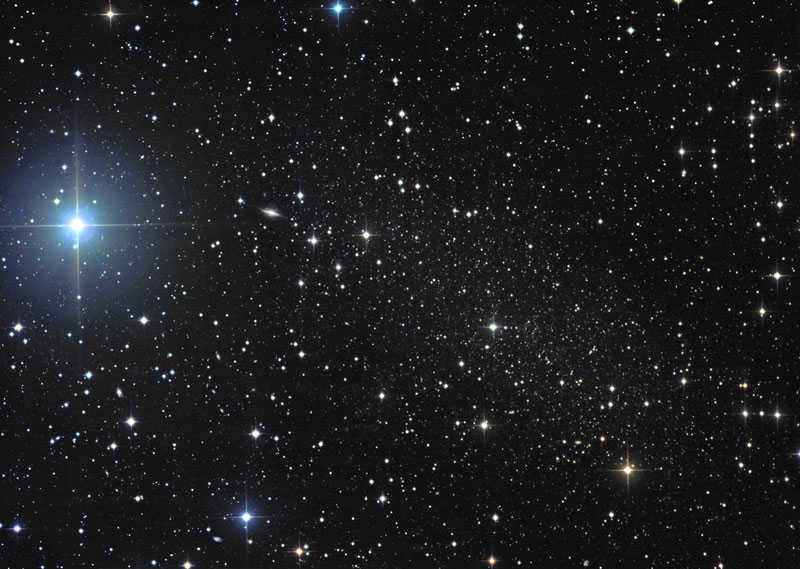
Aside from the primary stars in the constellation Ursa Minor, there is also intrigue surrounding the galaxies within it. The aforementioned Dwarf galaxy, which is a companion to the Milky Way, was first observed in 1954. This galaxy is quite ancient, with an estimated age of at least ten billion years. Due to its small size, it is difficult to determine if it contains any gas, dust, or ongoing star formation. It is occasionally referred to as Polarissima due to its close proximity to the Earth’s rotational axis.

Furthermore, within the constellation lies NGC 6217 and NGC 5832 galaxies. Each of these entities is minuscule in relation to the vastness of the cosmos, necessitating the use of advanced optical instruments to perceive them.
The Constellation’s Origin
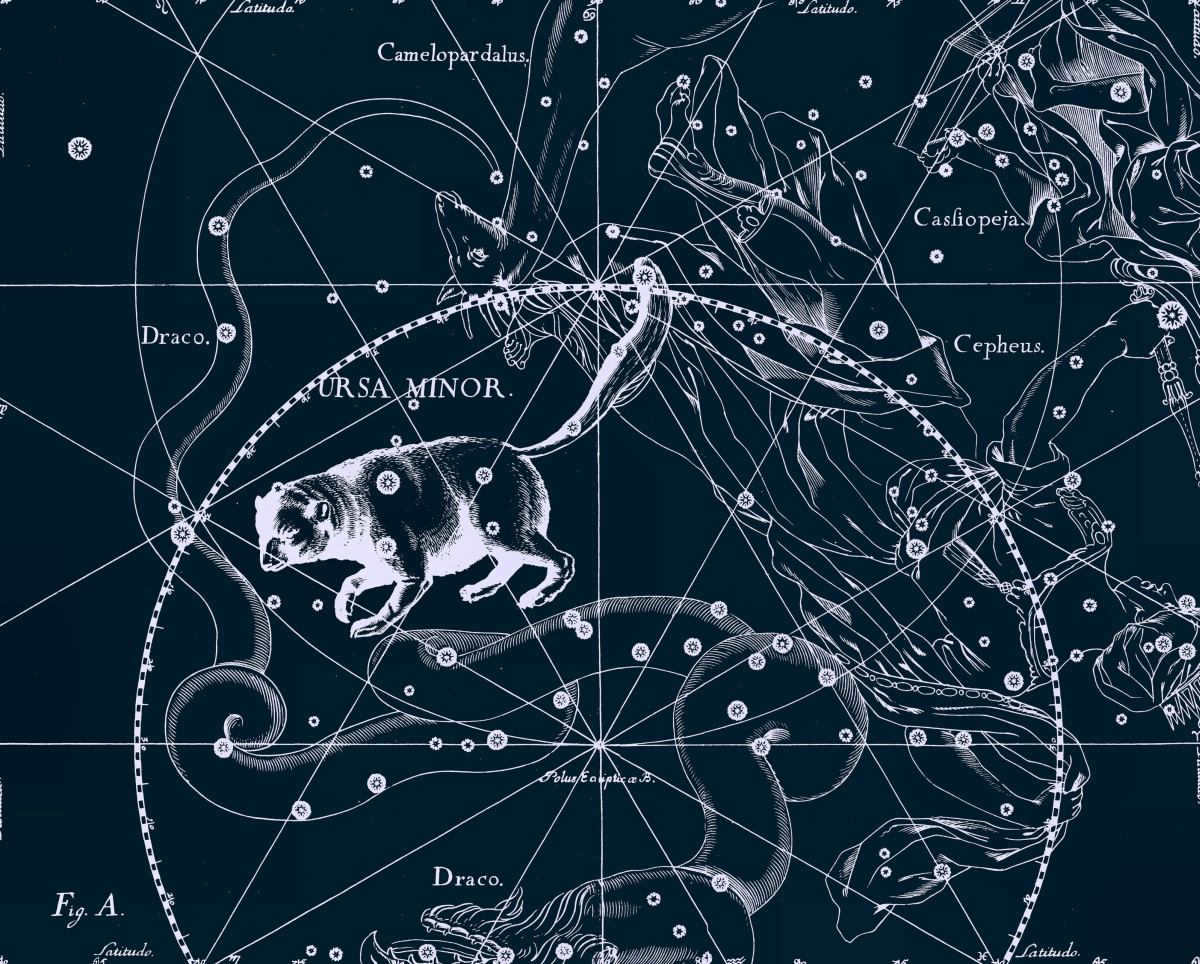
Also check out these related articles:
The Little Bear is a minor constellation located in the Northern Hemisphere and consists of 25 easily visible stars. The seven largest stars in this constellation create a pattern resembling a ladle in the night sky, with the handle of the ladle being completed by the star Polaris. Due to its position, the Little Bear is always visible in the night sky and can be easily spotted by using certain reference points, even without the need for a telescope.
How to Spot the Little Dipper – Selecting the Ideal Setting
To ensure a successful stargazing experience, keep these recommendations in mind:
- Opt for a cloudless night to easily locate the stars, without any obstructions from layered clouds;
- Head out of the city, where bright streetlights and illuminated windows are absent, and instead, you’ll find a vast dark sky where the Little Dipper awaits your discovery;
- When commencing your observation, position yourself in a way that tall trees or buildings do not obstruct your view of the horizon. Ideally, an unobstructed horizon is the best scenario.
How to locate Polaris using the Big Dipper
The Little Dipper, which contains the famous star Polaris, may not be the brightest in the night sky. Therefore, it is easier to find it by first locating the Big Dipper, which has a distinct ladle shape. The Little Dipper is visible during clear nights in the autumn and winter months, hanging in the northern part of the sky. In the spring, it can be seen in the eastern sky with the handle pointing downwards, while in the summer, it appears in the western sky with the handle pointing upwards.
- To find the Big Dipper, follow our recommendations and locate it in the night sky. Once you have found it, mentally connect the stars to form a bucket shape with a handle.
- Take note of the bowl of the Big Dipper, which consists of four stars. The two outer stars, Dubhe and Merak, are known as the index stars. By using these stars as a reference, you can determine the location of Polaris.
- Visualize the connection between Merak and Dubhe by drawing an imaginary ray. Extend the ray upwards and slightly to the right, making sure the distance is more than five times the distance between these stars. Locate Polaris, the endpoint of the handle of the Little Dipper, at the end of the line.
If you’re still having trouble visualizing the Little Dipper after conducting this research, here’s a helpful hint.

How to locate the Little Dipper – an extra point of reference
Have you managed to locate Polaris, but are unable to see the Little Dipper? In such a scenario, the massive stars on the front rim of the Little Dipper’s bowl – Kochab and Pherkad – can be of assistance.
- Shift your gaze towards the left side of Polaris and observe a light-colored circle within an orange halo – this is Kochab, and above it, forming the upper corner of the bowl, is Pherkad. These stars revolve around Polaris and are known as the Guardians of the Pole.
- Take a closer look, and you’ll notice two more stars that form the inner corners of the bowl. Connect them with lines, and you’ll have a dipper without a handle.
- Locate the pair of faintly luminous star dots positioned between the bowl and the Polaris. Join the remaining spaces by drawing straight lines, and you will form a diminutive ladle with a handle that points in the opposite direction of the handle of the Big Dipper.
While the Little Dipper can be observed at any time, it is most visible in the winter sky before dawn or during the initial hour of sunset in spring.

If you have the opportunity, take a moment to escape the hustle and bustle of the city and immerse yourself in the serenity of nature. Look up at the vast expanse of the night sky and contemplate the mysteries of the universe, the distant galaxies whose light has traveled millions of years to reach our planet.
Undoubtedly, one of the most well-known constellations in the northern hemisphere’s sky. The seven brightest stars that form the Big Dipper asterism can be seen throughout the year in middle latitudes. This celestial guide is an invaluable tool for stargazers, helping them locate other constellations and find their bearings on Earth.
It is likely that many individuals are familiar with the constellation known as Ursa Minor, which is located near the Big Dipper and can be seen in the sky year-round. Ursa Minor is made up of bright stars that form the Small Dipper asterism, although not everyone is able to locate it, along with the constellation itself. Nevertheless, this constellation holds significant importance for those residing in the northern hemisphere of Earth, as it is home to the famous Polaris, which serves as a guide to the north.
Now, let us briefly explain how to locate Ursa Minor using the Big Dipper. It is actually quite simple to do so, starting from the stars of the Big Dipper.
The initial step is to locate the constellation of the Big Dipper in the sky, which is significantly larger than the actual dipper. During the spring, the Big Dipper can be easily spotted as it reaches its highest point in the evening sky. In the summer, the Big Dipper can be found in the western part of the sky, with the dipper slightly tilted downwards.
During mid-summer, the Big Dipper is positioned as shown in the image below. Image: Stellarium
In the autumn, it appears low on the northern horizon and remains almost horizontally aligned…

The Little Bear can be found in the sky during the autumn season. Illustration: Stellarium
…and during the winter months, it can be seen in the eastern part of the sky, with the handle of the Big Dipper almost vertical.

During the winter season, you can locate the Big Dipper towards the east. Note: Stellarium
Once you have successfully identified the Big Dipper, mentally draw a line connecting the two outer stars that form the rim of the dipper, namely Merak and Dubhe. Next, extend this line by five times the distance between Merak and Dubhe. . The extended line will lead you to a star that shares the same level of brightness as the stars within the dipper. This particular star happens to be the brightest one in the constellation of the Little Dipper.

In the spring, you can easily locate the Little Dipper by using the Big Dipper as a guide. To find the Little Dipper, look for the line connecting the stars Merak and Dubhe in the Big Dipper’s handle. This line will point you towards Polaris, also known as the North Star. Once you have located Polaris, you can then look above the Big Dipper’s handle to find the two brightest stars of the Little Dipper, known as Kochab and Pherkad. These stars are positioned just above the handle of the Big Dipper. Figure: Stellarium
Polaris is situated at the end of the handle of the Small Dipper constellation. The stars that form the Small Dipper are generally much fainter compared to the stars of the Big Dipper, making it challenging to locate the Little Dipper in a city with a backlit sky. The Small Dipper is approximately half the size of the Big Dipper, and its handle curves in the opposite direction. Out of the seven stars that compose this asterism, only three can be reliably seen in urban areas: Polaris in the handle and the stars Cohab and Ferkad, which form the wall of the Little Bucket. The last two stars are positioned above the handle of the Big Dipper.
In the urban environment, only Polaris, along with the stars of the Small Dipper’s wall, Cohab and Ferkad, are easily visible from the entire constellation of the Little Dipper. Cohab and Ferkad are positioned above the handle of the Big Dipper and are visually connected by a dash in the illustration to enhance clarity. This specific arrangement of the Big Dipper in relation to the Little Dipper can be observed during the spring season, when the Big Dipper is nearly at its highest point in the sky. Illustration: Stellarium
To observe the complete Little Dipper, rather than just its outer stars, it will most likely be necessary to venture outside of urban areas and away from the bright lights of the city. It is ideal for the night to be dark and devoid of moonlight. Under these conditions, locating the Little Dipper should be relatively straightforward. Fortunately, unlike other star formations, the Little Dipper’s position in the sky remains relatively unchanged. Most constellations are seasonal, only visible during specific times of the year, or have significant shifts in their position depending on the season, such as the Big Dipper. However, the Little Dipper can always be found within a specific section of the sky. The Little Dipper is perpetually visible within the same section of the sky. On the other hand, the position of the Small Dipper does vary, appearing in the north or south, west or east. Nevertheless, its brightest star, Polaris, always remains in the same location regardless of the time of day or year. Polaris acts as the central point around which the Little Dipper and all other constellations revolve.

Even though the location of the Little Bear constellation varies throughout the year, the position of Polaris remains constant. The technique of locating Polaris using the outermost stars of the Big Dipper is effective during any season. Image: Stellarium
This is feasible because Polaris is situated in close proximity. The distinctive characteristic of Polaris remaining stationary enables it to serve as a reference point on the ground. In actuality, if you draw a line perpendicular to the horizon from Polaris, it will accurately indicate the north direction. However, not only Polaris, but also the Big Bucket can assist in orienting oneself on the terrain. During the spring season, the handle of the Big Bucket faces east, while the bucket itself faces west, and in the evenings during other seasons, as previously mentioned. The Big Bucket can be found in the west, north, or east, facilitating the determination of the cardinal directions.
Acquiring the knowledge of locating the Little Dipper, Cassiopeia, and the Dragon
So, let’s start our introduction to the celestial heavens. Today we will familiarize ourselves with four constellations in the Northern sky: Ursa Major, Ursa Minor (which includes the famous Polaris), Draco, and Cassiopeia. These constellations are always visible in the starry sky due to their proximity to the North Pole of the Earth. They can be observed on any day and at any time. Let’s begin with the well-known “Big Dipper” constellation. Have you located it in the sky? If not, remember that during summer evenings, the “ladle” can be found in the northwest. In the fall, it is in the north. In winter, it is in the northeast. And in spring, it is directly overhead. Now, take note of the two outermost stars of this “bucket” (see figure).
If you mentally visualize a straight line connecting these two celestial bodies, the first star, which shines as brightly as the stars in the “handle” of the Big Dipper, is Polaris, a member of the constellation known as the Little Dipper. Consult the provided map to locate the other stars in this constellation. In urban environments, it may be challenging to spot the stars in the “small dipper” (an unofficial name for the Little Dipper constellation) as they are not as luminous as those in the “big dipper” or the Big Dipper. It is advisable to have binoculars on hand for this purpose. Once you have spotted the Little Dipper, you can attempt to locate the Cassiopeia constellation. Personally, I initially associated it with another “dipper”. It resembles more of a coffee pot. Therefore, focus your attention on the second-to-last star in the “handle” of the Big Dipper. This star is situated next to a faint star that is barely visible to the naked eye. The bright star is known as Mizar, while the neighboring star is called Alcor. Here is a lineup of notable Soviet telescopes for astronomy enthusiasts, manufactured by the Novosibirsk instrument-making plant (NPZ). It is believed that, when translated from Arabic, Mizar means “horse” and Alcor means “rider”. Although I am familiar with the Arabic language, I cannot confirm this, but let’s trust the available literature.
So, we have located Mizar. Now, visualize a straight line extending from Mizar through Polaris and continue that same distance. You will then come across a rather bright constellation in the shape of the letter W, which is known as Cassiopeia (refer to the image). Interestingly, Cassiopeia somewhat resembles a coffee pot, don’t you think?
After identifying Cassiopeia, let’s move on to locating the Dragon constellation. As shown in the image at the top of this page, the Dragon stretches between the “buckets” of the Big and Little Dipper, extending further towards Cepheus, Lyra, Hercules, and the Swan. We will discuss these constellations in more detail later, but once you have gained some basic experience in navigating the night sky, try using the provided drawing to locate the Dragon constellation in its entirety.
Now it should be effortless for you to locate the constellations of Ursa Major and Ursa Minor, Cassiopeia, and Draco in the celestial sphere.
Queries:
1. At what part of the sky was the constellation Cassiopeia situated during your observations?
2. In what part of the sky was the handle of the Big Dipper positioned?
3. Could you perceive Alcor with your naked eye?
There exist stellar arrangements in the heavens that are widely recognizable. The constellation of Ursa Minor is one of them.
The Little Bear constellation is situated in the circumpolar region of the sky and holds a total of 25 stars. However, only seven stars are commonly recognized by most individuals, forming a distinct pattern known as the Little Bucket. One particular star within this constellation stands out and is widely renowned – its position nearly aligns with the North Pole of the Earth. Apart from the relatively bright stars, there is also a diminutive elliptical galaxy present in this constellation, affectionately nicknamed the Little Dwarf due to its petite size.
Place

The Little Dwarf constellation can be easily found in the night sky. Its neighboring constellations are Giraffe, Dragon, and Cepheus. To locate it, you can use Polaris as a reference point. By drawing a line through the two outer stars of the Big Dipper’s scoop and measuring upwards five times the distance between them, you can find Polaris, which marks the beginning of the “handle” of the Little Dipper constellation. Although it is not as bright as the Big Dipper, the Little Dipper is still clearly visible and distinguishable from other constellations. It can be observed year-round in the Northern Hemisphere.
Arctic: The Top of the World
The Arctic region is home to the North Pole, which is the point on the celestial sphere that remains fixed in the sky for observers on Earth, while all other celestial objects appear to revolve around it. This point can be used as a reference point, especially if there is a bright star nearby, as its position remains constant regardless of the time of day. Despite the Earth’s continuous motion, the North Pole’s position is relatively stable over long periods of time, such as centuries. Currently, the closest star to the North Pole is Polaris, which is located just 40 minutes away in angular distance.
North Star

The Little Bear’s Alpha is positioned at a distance of 434 light-years from our planet and has a visible brightness of 1.97. However, it is not just one star, but actually a system of three stars. The largest among them is 4.5 times more massive than the Sun and emits about two thousand times more light than our star. The second largest star is situated at a considerable distance from the main star and can even be observed using a small telescope. Its mass is approximately 1.39 times that of the Sun. The third star is so close to the first that they can only be visually separated with the aid of a telescope, and even then, it is a challenging task. This star is 1.25 times more massive than the Sun.

The beta star in the Little Bear constellation is the second brightest and has an apparent magnitude of 2.08. It is located approximately 126 light years away from Earth. Its Arabic name translates to “Star of the North” and it served as a navigational reference point for ancient civilizations from 2000 to 500 years before our era, when it was closest to the pole. In 2014, Korean astronomers discovered a planet orbiting this double star, which has a mass 6.1 times that of Jupiter. The gas giant takes 522.3 days to complete one orbit.

The star known as Gamma Minor is located approximately 480 light-years away from Earth. Its apparent magnitude can vary between 3.04 and 3.09. This celestial body experiences changes in its luminosity every 3.43 hours. As the third brightest object in the constellation, Gamma Minor is classified as a hot giant with a temperature of around 8600 K. It is 15 times larger than our yellow dwarf and its luminosity is 1.1 thousand times greater than that of the Sun. This star belongs to the T Shield type of variable luminaries.
Asterism Types

In the sky, there are two groups of stars that make up the Little Dipper and the Protectors of the North Star. The Little Dipper is familiar to many stargazers as it closely resembles the Big Dipper, but with dimmer stars. It consists of the most prominent stars in the constellation. Some people mistakenly believe that the Little Dipper only consists of these seven stars, but in reality, there are 18 additional stars that make up its composition.
The second group of stars, known as the Protectors of the North Star, is not as well-known and dates back to ancient times. These stars, named Ferkad and Kohab, used to be positioned closer to the celestial pole than Polaris, which is now the North Star.
Meteor streams: a unique phenomenon in the night sky

The Little Dipper acts as the radiant point, the final “starburst” of the year that is relatively understudied. Its radiant is located near the Little Ladle, and the meteor shower takes place between December 17 and 25 with highly unpredictable activity. Typically, during the most active days, there are about 10 to 20 meteors per hour, which may not be very captivating for the average observer. However, there are sporadic bursts of activity when the number of meteors exceeds a hundred. Notable instances of such meteor “harvests” occurred in 1988, 1994, 2000, 2006, and particularly in 1945 and 1986. This meteor stream is the furthest north of its kind and owes its origin to the short-period comet Tuttle.

Aside from the primary stars in Ursa Minor, there is a fascination with the galaxies within it. The aforementioned Dwarf, which is a companion to the Milky Way, was found in 1954. It is a relatively ancient galaxy, at least ten billion years old. Its size is too diminutive to determine if it contains gas, dust, or any star formation processes. It is occasionally referred to as Polarissima due to its proximity to the Earth’s rotational axis.

Furthermore, the constellation also contains NGC 6217 and NGC 5832 galaxies. All of these celestial bodies are relatively minute in comparison to the vastness of the cosmos, making them imperceptible without the aid of high-quality optical instruments.
The Origin Story of the Constellation

Also, take a look at these related articles:
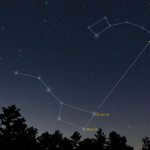
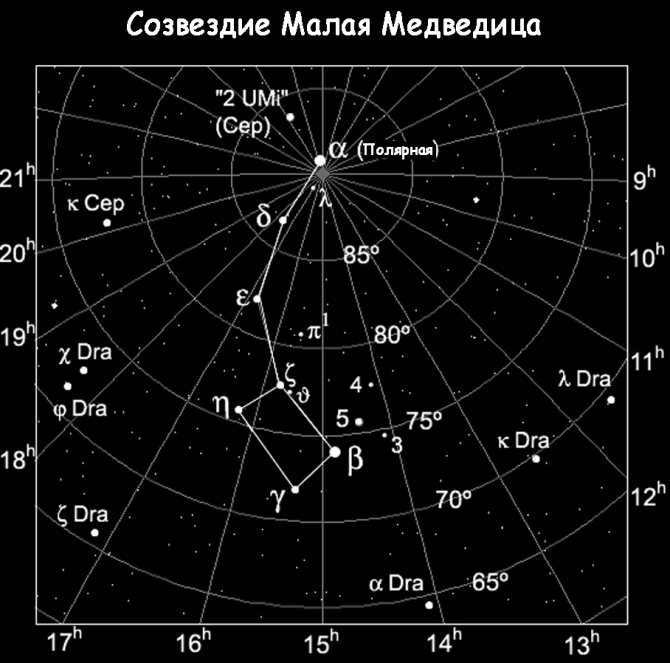
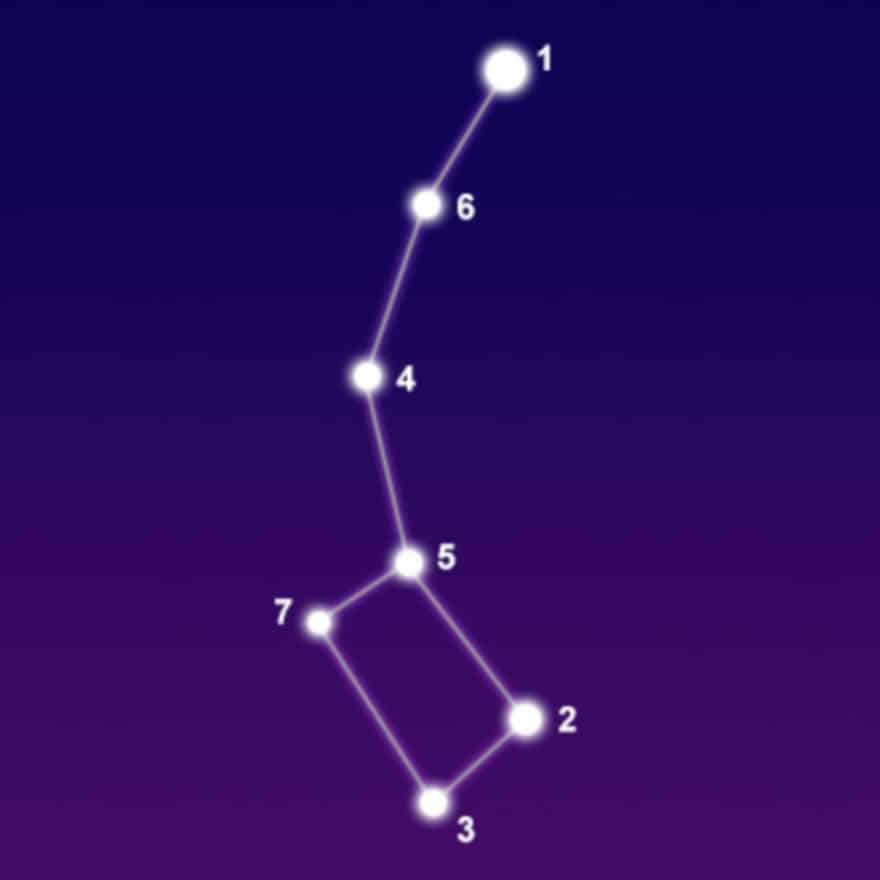
How to locate the Little Bear using the Big Dipper?
Undoubtedly, most individuals can easily locate the Big Dipper. It is quite distinctive and emits a bright light. Since both constellations are in close proximity to each other, it is clear how to locate the Little Bear within the Big Dipper. To accomplish this, mentally connect the final two stars of the Big Dipper: from Merak (β of the Big Dipper) to Dubhe (α of the Big Dipper)), and extend this line upwards to a distance that is five times the length between them. This is how you will discover the Alpha (Polaris) of the Little Bear constellation.
Before contemplating how to locate the Little Bear constellation solely based on the position of Polaris, it is important to comprehend the shape that the stars create and the positioning of the asterisk relative to the Big Dipper.
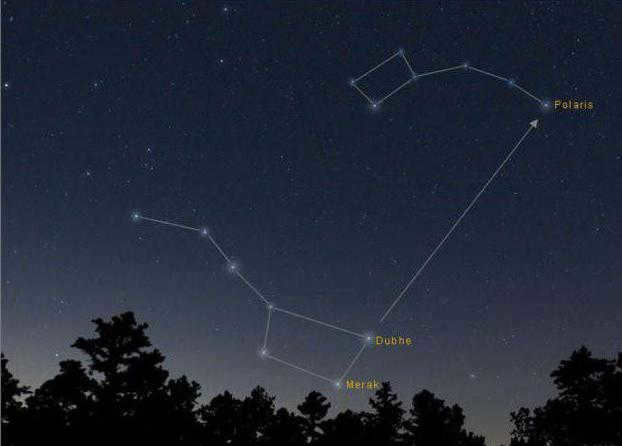
To gain a complete comprehension: based on their respective names, they exhibit considerable similarities and bear a resemblance to the configuration of a container. In terms of positioning, the Little Dipper is essentially situated in an inverted orientation compared to the Big Dipper.
Myths and tales surrounding the Big Dipper and the Little Dipper
The presence of constellations has been common knowledge for centuries. Even in ancient times, they served as guiding lights for explorers. However, for the ancient Greeks, they held a significance far beyond being mere celestial dots.
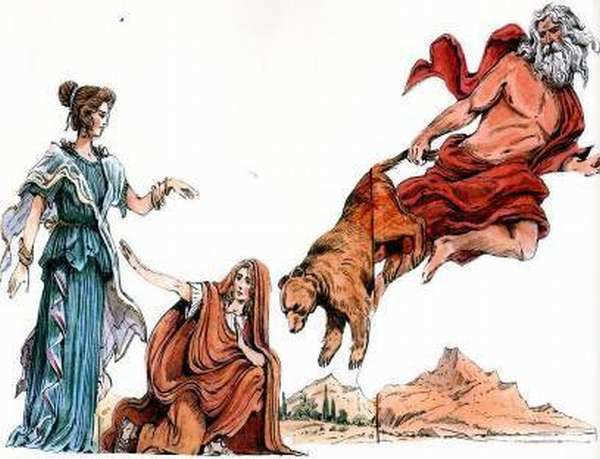

According to ancient legends, Zeus, the god of thunder, had a secret paramour who possessed an otherworldly beauty that captivated the hearts of all men. Her name was Callisto.
One fateful day, Callisto made a grave mistake that had dire consequences. She was transformed into a fearsome bear. In order to safeguard her beauty, Zeus cast her into the heavens, inadvertently stretching her tail in the process. This is the reason why the tail of the constellation Ursa Major appears elongated.
Accompanying the girl in her celestial journey was her loyal dog, who was also transformed into a bear cub. This tale was widely known among the ancient Greeks.
The vast expanse of the starry sky holds many wonders waiting to be discovered. Even the familiar constellations, like the bears, have fascinating stories to tell. Who knows what other unknown constellations are waiting to be found in the vastness of space? Knowledge is the key that unlocks the window to our universe.
Knowledge is the Ultimate Power
Before embarking on your search, take the time to study the star map. This will make it easier to locate specific constellations. As you become familiar with the night sky, you’ll realize that finding the star group you’re searching for is not as challenging as it may seem. And when someone asks you how to find the Little Dipper within the Big Dipper, you’ll have the knowledge and confidence to explain the process with clarity.
Now that we have acquired the knowledge of locating the constellation Ursa Minor, let us delve into the significance of Polaris, which aided the arduous and lengthy journeys of past travelers and navigators. Despite not being the most luminous star in the nighttime firmament, it holds the distinction of being the closest star to the northernmost point of the globe, with an error margin of only 1 degree. However, after a mere 145 years, the positional error will surpass one degree.
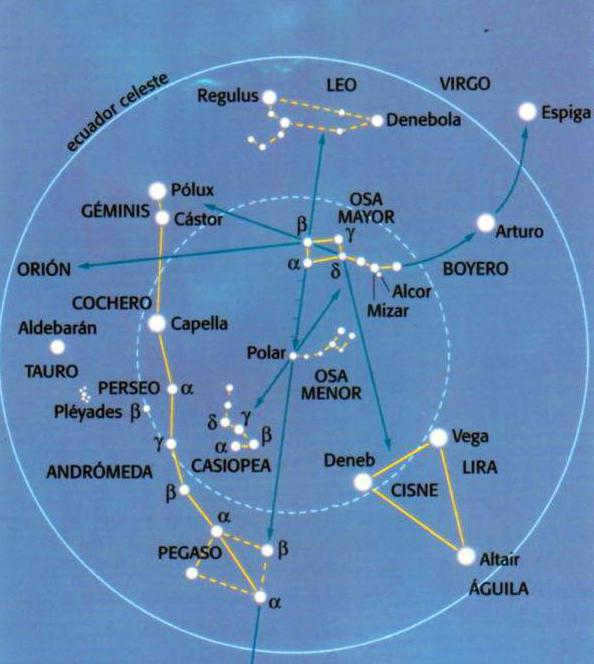
It is not until the year 3200 that Alderamin (alpha Cepheus) will become the nearest star to the northernmost point of the Earth.
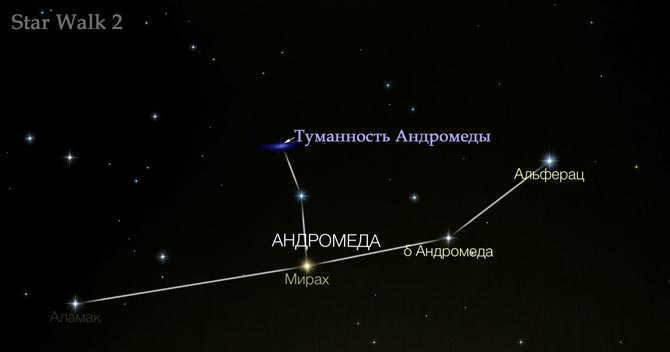
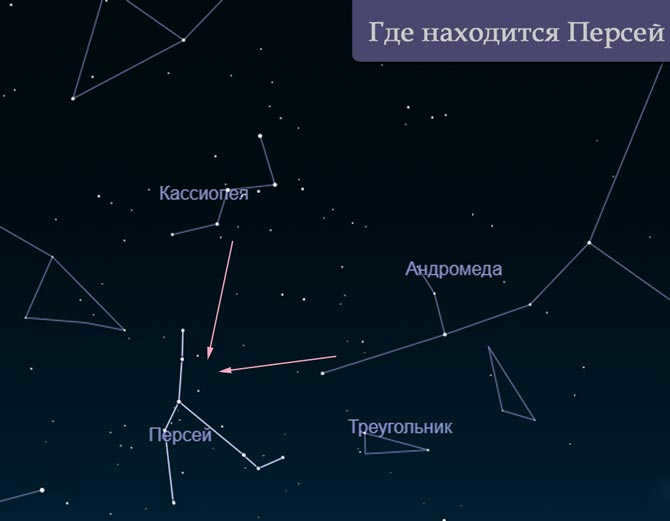
The most luminous star in the constellation of Ursa Minor
The most brilliant spot in the celestial sphere appears to be so only to the human eye. In reality, there exist numerous objects that emit more light. Nonetheless, Polaris shines with greater splendor than its counterparts. It is a supergiant and possesses two companions.
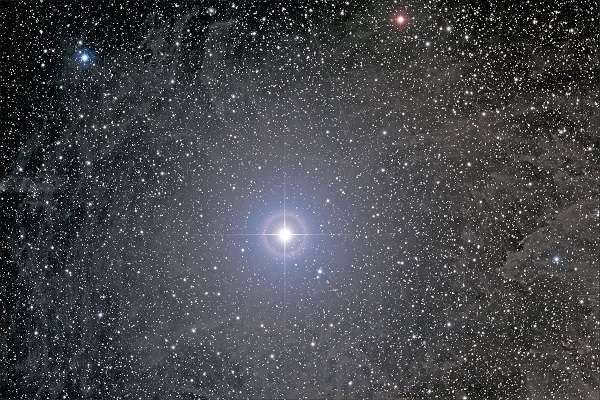
The central star in the Little Bear constellation is extraordinarily bright, shining 2000 times brighter than the Sun. Recently, scientists discovered a second satellite, but its small size made it difficult to observe with telescopes on Earth.
“Twists” the bear’s tail about the Earth’s axis.
Polaris maintains its position unchanged, regardless of the Earth’s daily rotation and yearly orbit around the Sun. The brightness of this guiding star is variable and undergoes periodic changes with a 4-day cycle, within a range of 2.02 ± 2%. In the past, the amplitude of its luminosity was higher, but it has now stabilized. Over the past century, the total brightness of Polaris has consistently increased, rising by nearly 15%.
The pulsation phenomenon is linked to the star’s luminosity property, which is characteristic of cepheids. Polaris stands out as one of the brightest cepheids in the nighttime sky. The Little Dipper occupies an area of approximately 255.9 square degrees in the celestial sphere. Its closest neighbors include the constellations Draco and Cepheus.
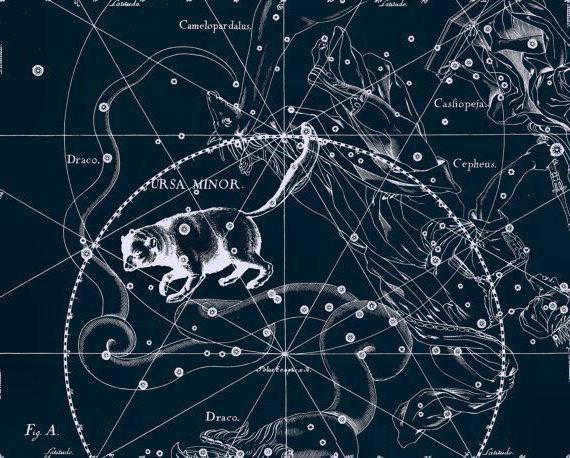
As previously stated, the asterism contains the North Pole of the Earth – the celestial sphere’s focal point around which all celestial bodies orbit. The earliest reference to this was documented by the Greek astrologer Ptolemy in the 2nd century.
Planetary systems
The constellation Ursa Minor is home to a variety of stars, including exoplanets. One of these stars, known as Kochab, is particularly notable. In addition to Kochab, there are several other dimmer stars in this constellation. The 11th planet in the Ursa Minor system is located approximately 390 light-years away from Earth. This planet orbits an orange giant, which is currently in one of the final stages of its evolution. The radius of this giant star is equivalent to 24 times that of our Sun, while its mass is only 1.8 times greater. In 2009, scientists discovered a planet orbiting this star with a period of 516 days. This planet has a mass estimated to be 10.5 times that of Jupiter.
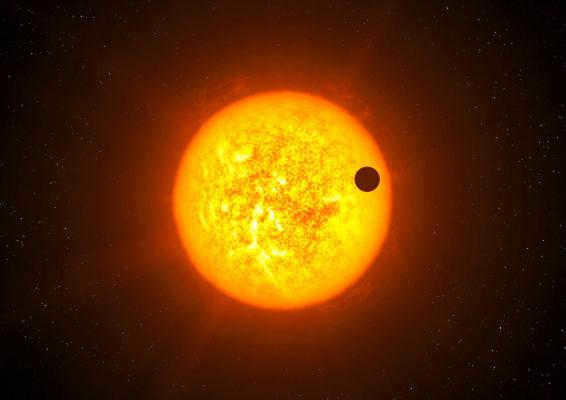

Astronomy designates another star with a planet as HD 150706. The distance between this star and Earth is approximately 100 light-years. Scientists estimate that the planet completes one orbit around its star in nearly six thousand days.
Little Bear and its celestial bodies
The cluster of stars known as the Little Dipper consists of seven luminous objects. Out of all the luminaries in the Little Dipper, only the three brightest can be easily seen. These three stars, Ferhad and Cohab, form the wall of the Bucket, while Polaris sits atop the handle of the constellation. The last two stars can be found above the tail end of the Big Dipper.
The Lesser Bucket stands out from other constellations in that it does not have a fixed position in the sky like the Big Dipper and most other asterisks, which are seasonal. These seasonal asterisks can only be observed during certain times of the year and they move across the sky throughout the seasons. The Little Dipper also changes its position as it revolves around its Alpha star.
The Tiny Bear in the Firmament
The Tiny Bear can be found in close proximity to the polar region and remains visible throughout the year in the northern hemisphere. It is identified as Ursa Minor, or UMi. The stars of this constellation are arranged in a configuration that resembles a “ladle,” akin to the Big Dipper, albeit with a distinctly curved “handle.”
Within the celestial sphere, the Little Dipper occupies the northern region. Polaris, the ultimate star in its tail, remains stationary at all times. The star’s elevation above the horizon, measured in degrees, is equivalent to the latitude of the observation site. As a result, Polaris not only serves as a guide to the north, but also facilitates the precise determination of one of its coordinates. This unique characteristic was recognized and utilized by the Phoenicians, providing them with a navigational advantage at sea for over a millennium.
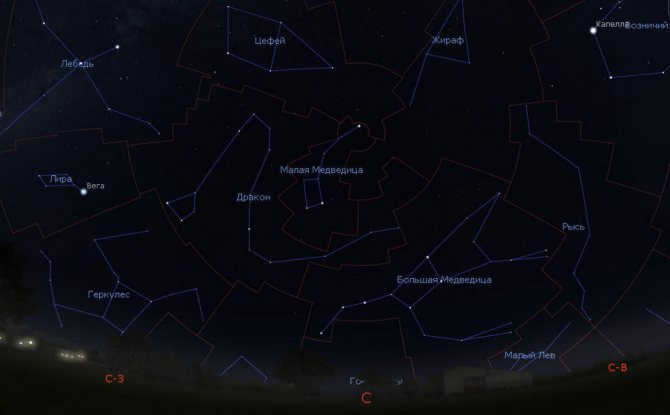
The constellation known as the Little Bear can be found in the sky. Its position on January 1st remains constant.
Throughout the year or even throughout the day, the rest of the Little Bear constellation can change its position, appearing to rotate counterclockwise around Polaris. Interestingly, this constellation is visible all year round in the northern hemisphere and can be seen on clear nights in Russia without ever setting below the horizon.
Adjacent to the Little Bear is a much larger and more prominent constellation called the Big Dipper. By locating the Big Dipper and drawing a line through the two outermost stars in its “bucket”, one can easily find Polaris. This method is well-known and simple enough to teach to children.
In terms of size, the Little Bear ranks 56th among all constellations and occupies a relatively small area of only 256 square degrees in the sky.
“Alpha and Omega” constellation of Ursa Minor in the northern hemisphere
Alpha (Polaris) of Ursa Minor is situated approximately 431 light-years away from our planet. It has an apparent magnitude of 2.02. Recent discoveries have revealed that it is not a single star, but rather a triple star system. The brightest of the three stars is nearly 2,000 times brighter than the Sun. The second star in the Ursa Minor constellation has a mass that is equivalent to 1.39 times that of our Sun.

The polar bear constellation can be observed using a small telescope. The third star, known as Alpha, is 1.25 times more massive than our Sun and is located close to the first star. With the help of the Hubble telescope, it is now possible to view Alpha as a separate star.
Kohab, also known as the Star of the North, is an orange-colored giant. It is the second brightest star, also referred to as beta, in the Lesser Dipper constellation. Kohab has a stellar magnitude of 2.8 and is located 126 light-years away from Earth.
Ferhad is the gamma star in the Little Dipper constellation. It has a magnitude of 3.6 and is located 480 light-years away from Earth. Ferhad is classified as a hot giant with a temperature of 8600 K and is considered to be a variable type of star.
Yildun, also known as Delta Little Bucket, is a white dwarf star that can be found 183 light-years from our planet.
Located even further away, at a distance of 380 light-years from Earth, is Zeta, another white dwarf. This celestial body is incredibly bright, with its luminosity being 200 times greater than that of the Sun. Furthermore, it is currently in the process of transforming into a giant star.
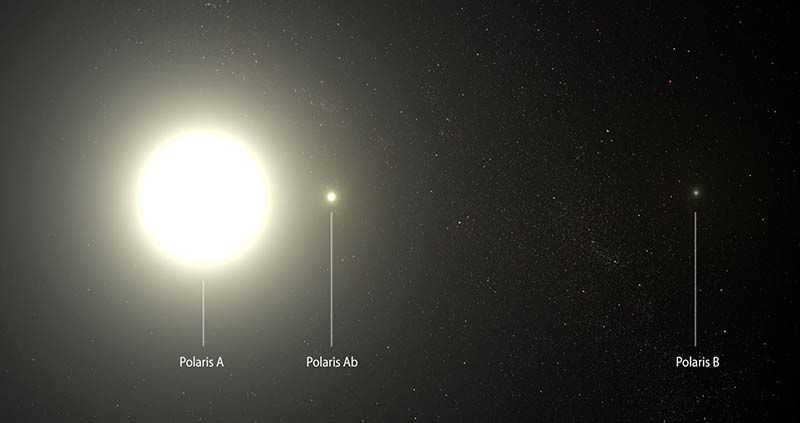
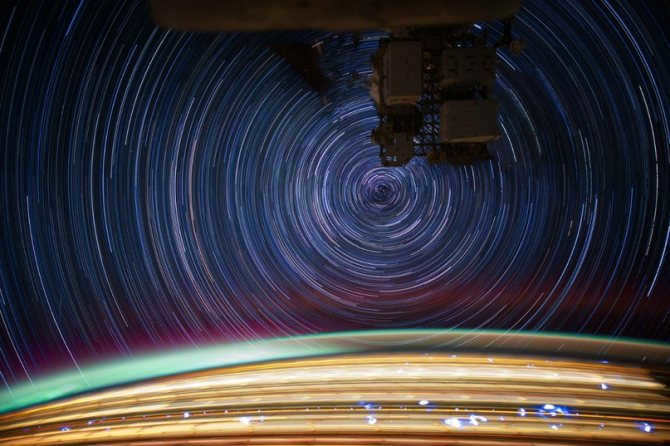
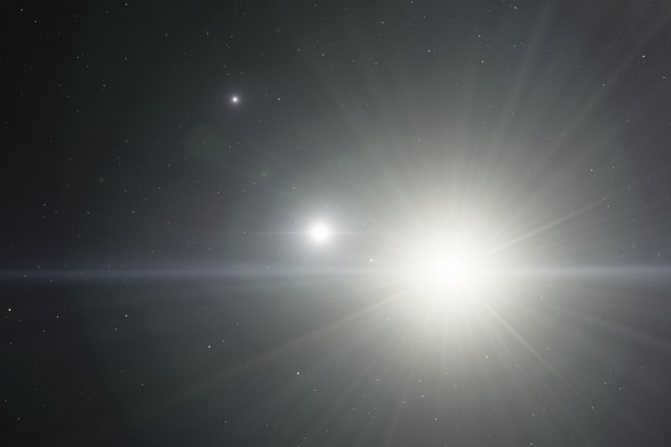
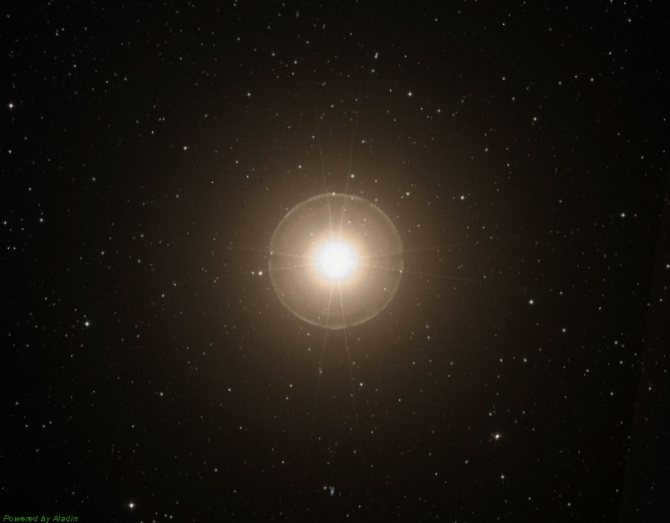
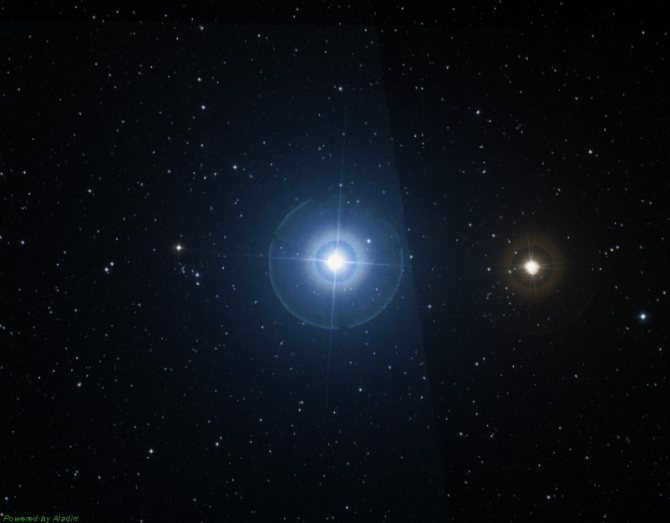
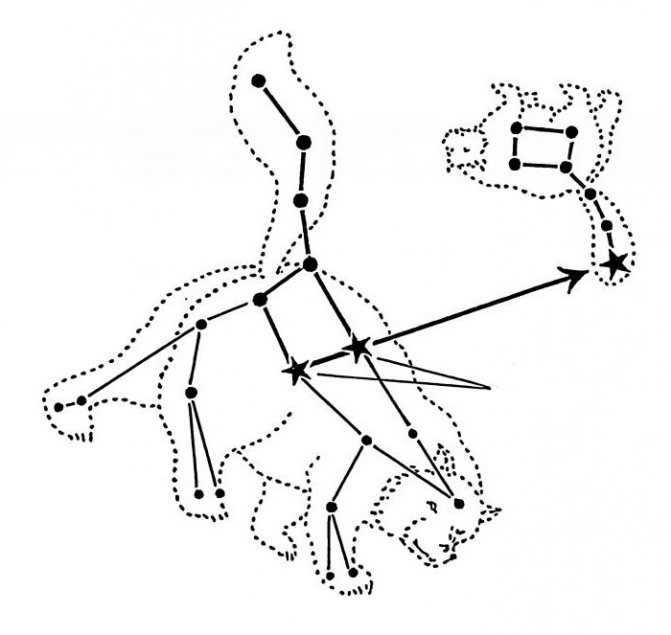
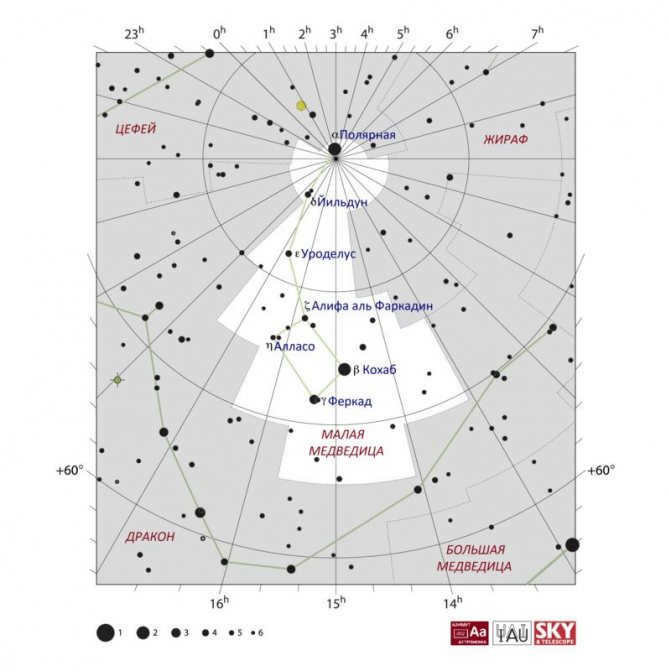
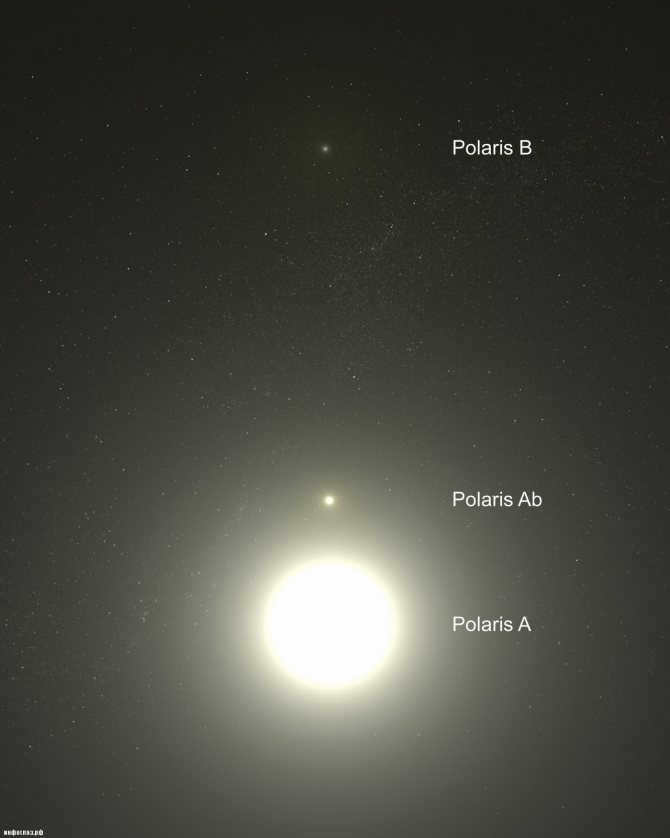
Polaris is of great interest to scientists for various reasons. It is a fascinating triple system, consisting of three components. The first component, Polaris A, is an incredibly bright supergiant, shining two thousand times brighter than our own Sun. The second component, Polaris Ab, is the closest companion to the supergiant. It was only recently discovered, as it is located a mere eighteen and a half astronomical units away from Polaris A. The third component, Polaris B, is a more distant companion, orbiting the double system at a slow pace of one revolution per thirty years.
Furthermore, Polaris, specifically its main component, belongs to the class of cepheids, which are variable stars that experience changes in size and luminosity over a specific period of time. In the case of Polaris, its pulsations fade and its brightness increases by fifteen percent. This unique characteristic sets this cepheid apart from others, making it an intriguing object of study.
The secrets and mysteries of the sky are endless
Simply by gazing at the celestial bodies that adorn the night sky, one can witness the vastness and enigmatic nature of our expansive universe.
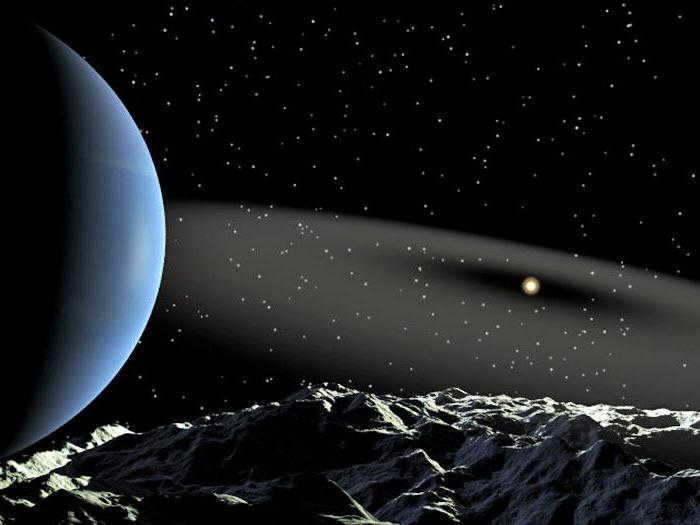
The Little Bear constellation represents only a small fraction of the vast expanse of the Universe. The boundaries and dimensions of the observable Universe are well-defined, spanning an immense length of approximately 14 billion light years.
However, the true nature of the Universe remains a subject of contemplation for brilliant minds. Leading scientists engage in hypothesis, research, debates, and endeavors to comprehend its actuality. Some experts espouse the belief that the Universe is boundless, while others propose the existence of a Multiverse.
There is a possibility that one of these galaxies contains a planet, a country, and an identical version of yourself. The boundaries of scientific knowledge are constantly expanding, revealing that what once seemed unimaginable will eventually become a reality.
Constellations
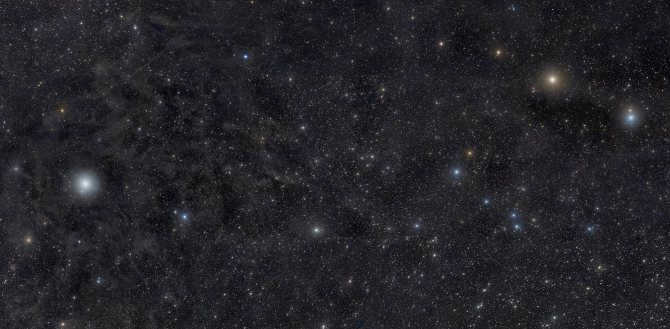
Astrophotographer Rogelio Bernal Andreo captured this stunning photo of the asterism known as the Small Bucket.
Within the constellation, there are two notable asterisms: the Small Bucket and the Guardians of the Pole. The Small Bucket is familiar to many modern observers. It resembles the nearby Big Bucket, but is not as bright. It consists of the most prominent stars in the constellation Little Bear. Despite popular belief, the Little Bear actually contains 18 additional stars in addition to these seven.
The second asterism, known as the Guardians of the Pole, is lesser-known and dates back to ancient times. Its name originates from the fact that the two stars that compose it, Ferkad and Kohab, were closer to the pole than Polaris.
Legends surrounding the constellation. The star Dubhe
There are countless legends and stories about the cluster of stars that make up the Big Dipper and the Little Dipper.
One particular belief revolves around the brightest star in the constellation of the Big Dipper, known as Dubhe. According to the myth, Callisto, the beautiful daughter of King Lycaon, was a huntress in the service of the goddess Artemis. The mighty Zeus became infatuated with Callisto and she ultimately gave birth to their son, Arkas. However, Zeus’ jealous wife, Hera, transformed Callisto into a bear as punishment. As Arkas grew older and became a skilled hunter, he unknowingly stumbled upon his mother’s bear form and prepared to shoot an arrow at her. Zeus, witnessing the imminent tragedy, intervened and transformed Arkas into a smaller bear. To ensure that mother and son would always be together, the ruler of the heavens placed them in the night sky as constellations.
Discovering the whereabouts of Lyra and Cepheus
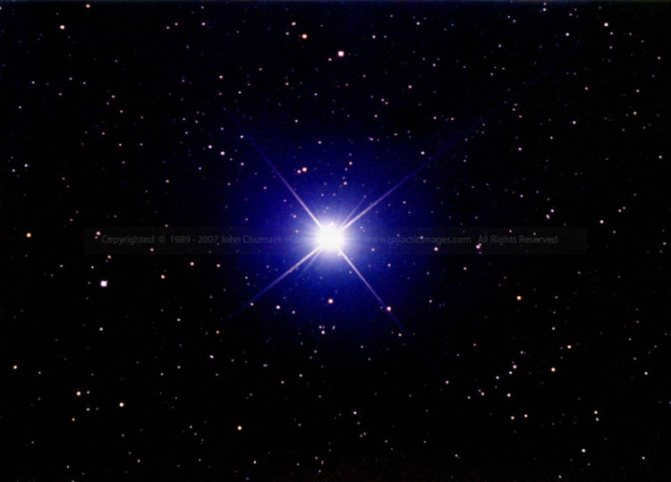
Let’s begin with Vega, particularly during the months of August and September, when this star is easily visible high in the sky above the horizon in the southwest, and then in the western part. People living in the middle latitudes can observe Vega throughout the year, as it does not set in these regions.
After becoming acquainted with the Dragon constellation, you may have observed the four trapezoidal stars that form the Dragon’s “head” in the western part. Additionally, you may have noticed a bright white star near the Dragon’s head, which is Vega. To confirm this, envision a straight line extending from the outermost star of the Big Dipper’s “bucket” (known as Dubge) through the Dragon’s head. Vega will lie exactly on this line. Now, focus your attention on the vicinity of Vega and you will see several faint stars that create a shape resembling a parallelogram. This is the Lyra constellation. Looking ahead, it’s worth mentioning that Vega is one of the points in the summer-autumn triangle, alongside the bright stars Altair (the primary star of the Eagle constellation) and Deneb (the primary star of the Swan constellation). Deneb is located near Vega and is labeled on our map, so attempt to locate it on your own. If you’re unable to find it, don’t worry – in the next task, we will learn how to search for both the Swan and the Eagle.
Now, direct your attention to the area near the zenith of the sky, assuming that you are currently observing on a late summer or autumn evening. If you happen to be outside of a major city, you should be able to discern a luminous band known as the Milky Way stretching from the southern to northeastern regions. Therefore, amidst the constellations of Draco and Cassiopeia, you will readily locate a celestial formation that bears a striking resemblance to a house with a roof, seemingly suspended within the Milky Way. This formation is none other than the constellation Cepheus. However, if you are conducting your observations within a bustling metropolis where the Milky Way is not visible, you can still utilize Cassiopeia and Draco as your reference points. The constellation Cepheus lies precisely between the curvature of Draco and Cassiopeia. The peak of the “lodge’s roof” is loosely oriented towards Polaris.
Clip
Myths and Legends surrounding the constellation of Ursa Minor
As a matter of fact, the tales surrounding this particular section of the night sky are intricately tied to the myths and legends of the Ursa Major. For instance, in ancient Greece, it was believed that Ursa Major represented the nymph Callisto, while Ursa Minor was her faithful dog. However, there exists an alternate interpretation for this constellation. According to this version, the seven stars of this region are actually the Hesperides, daughters of the titan Atlas. They were tasked with safeguarding the golden apples within the garden of Hera, and as a token of gratitude, Hera immortalized them by placing them in the heavens above.
